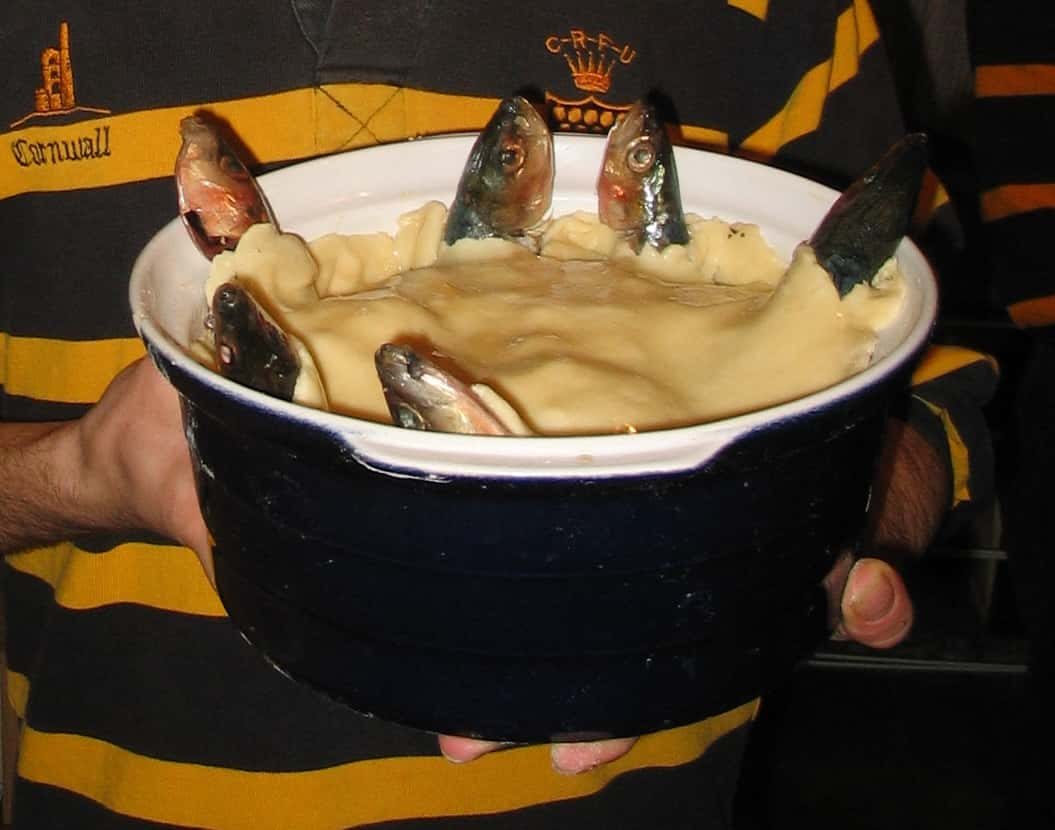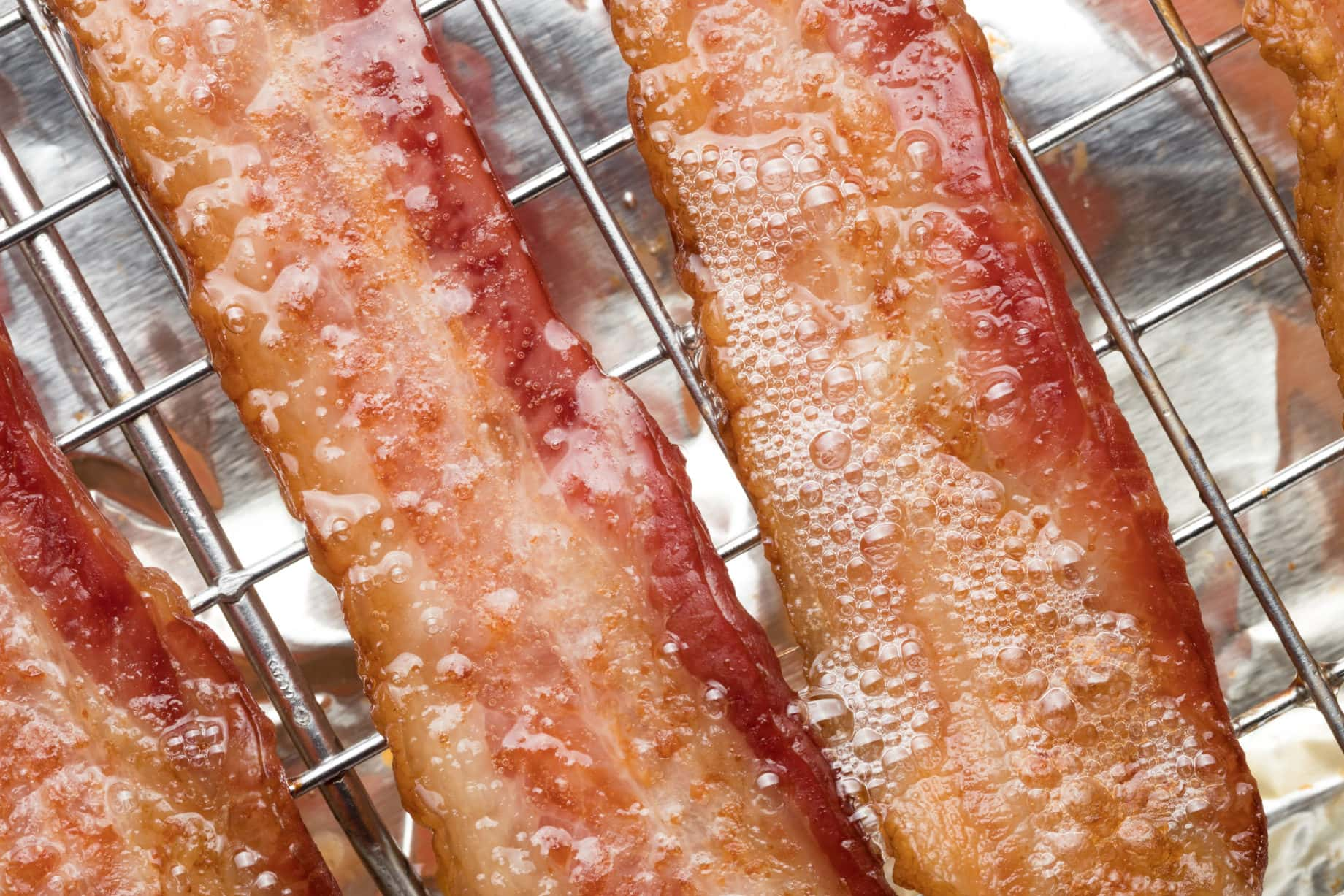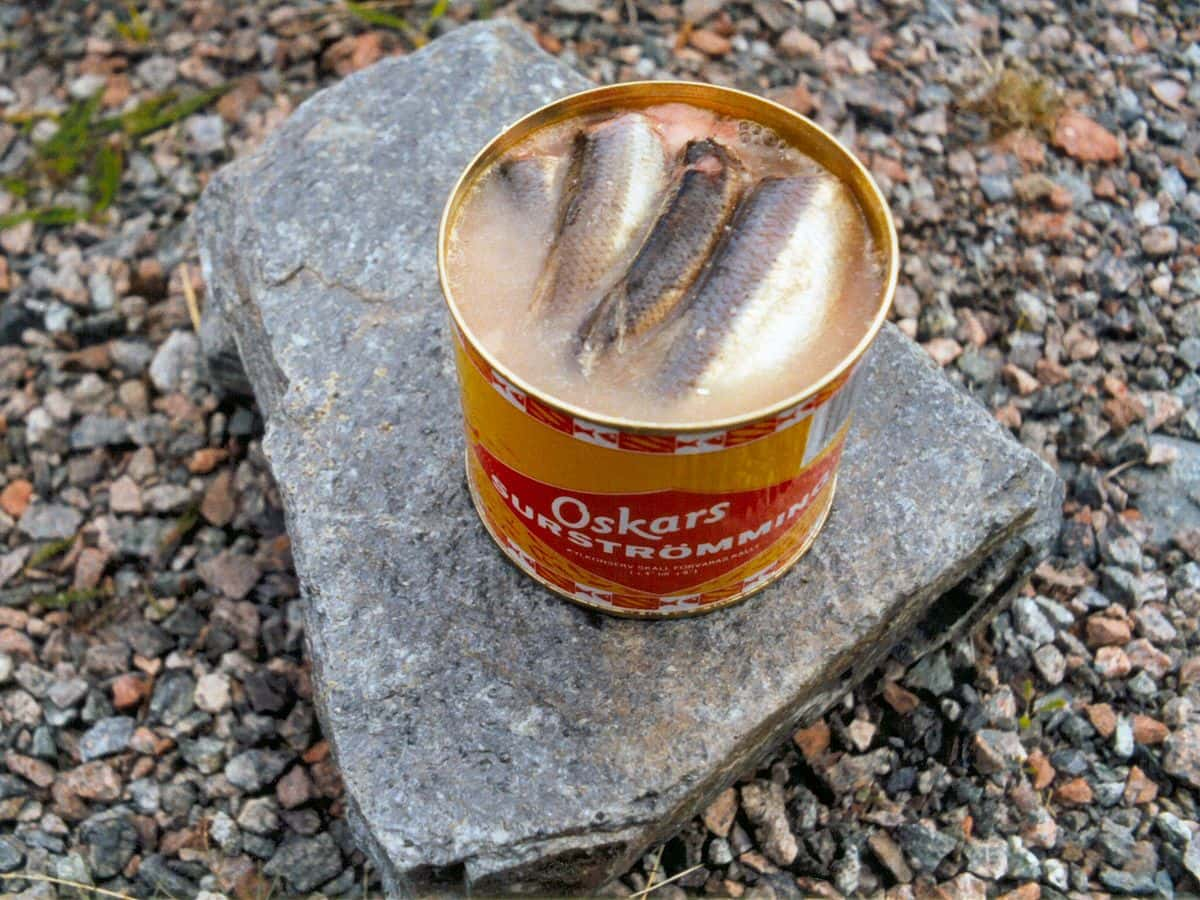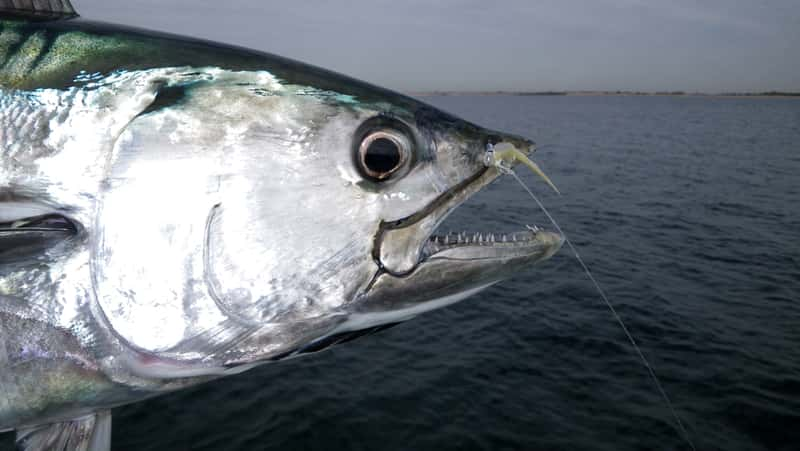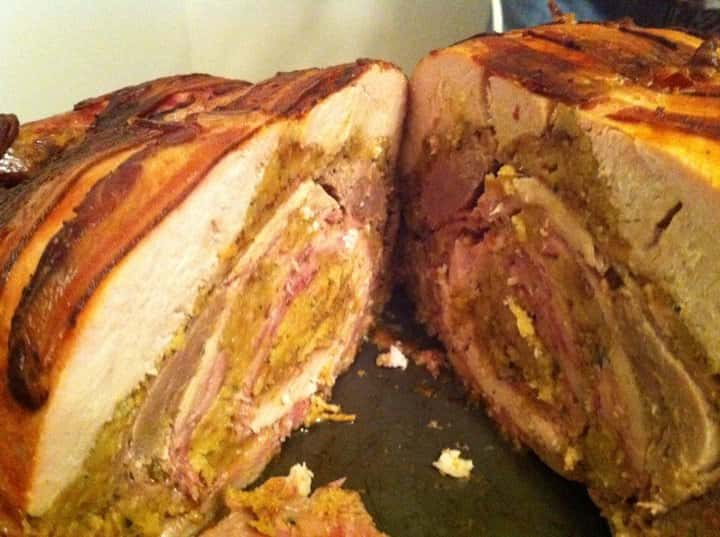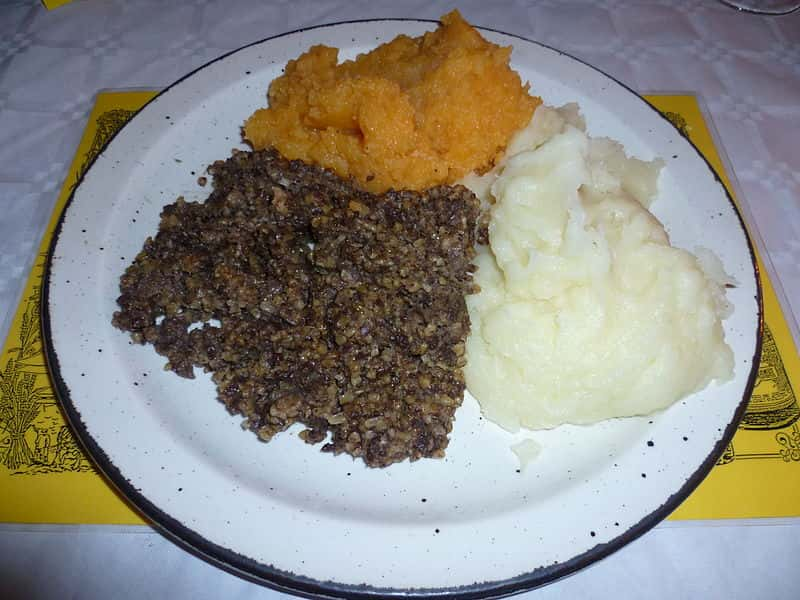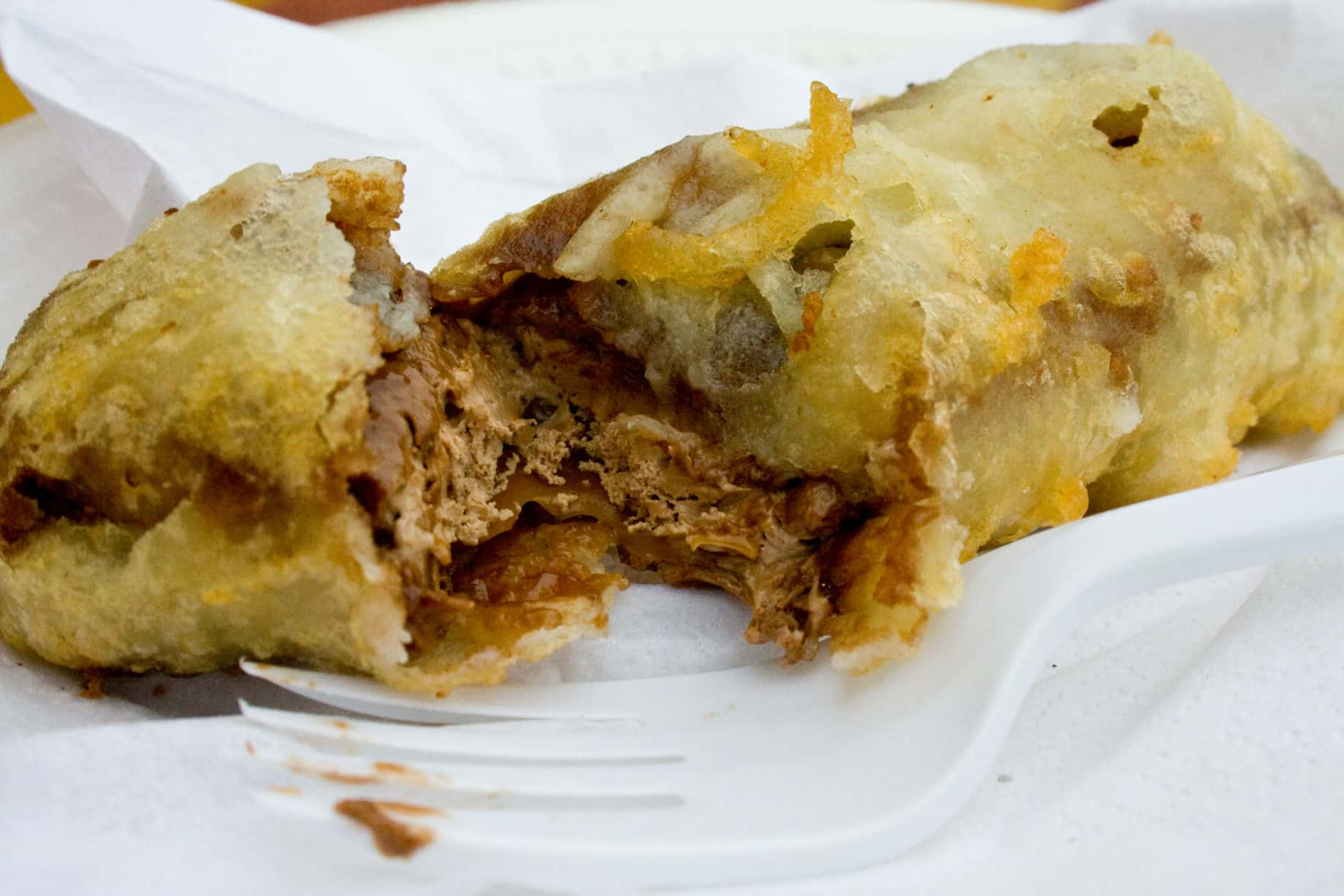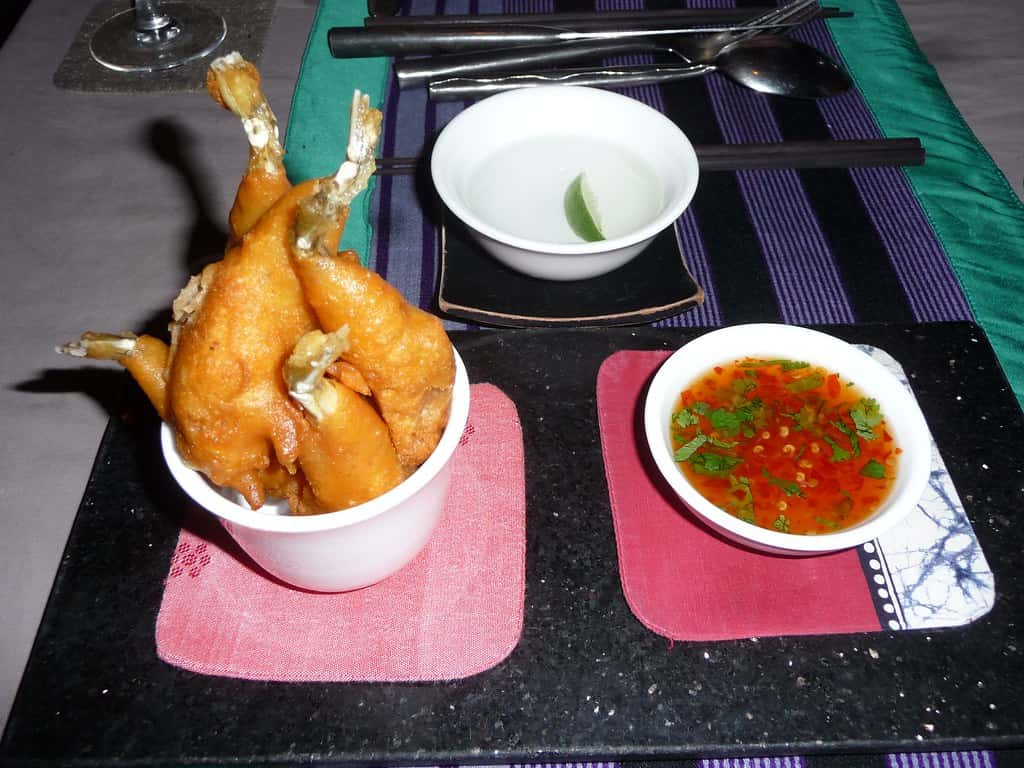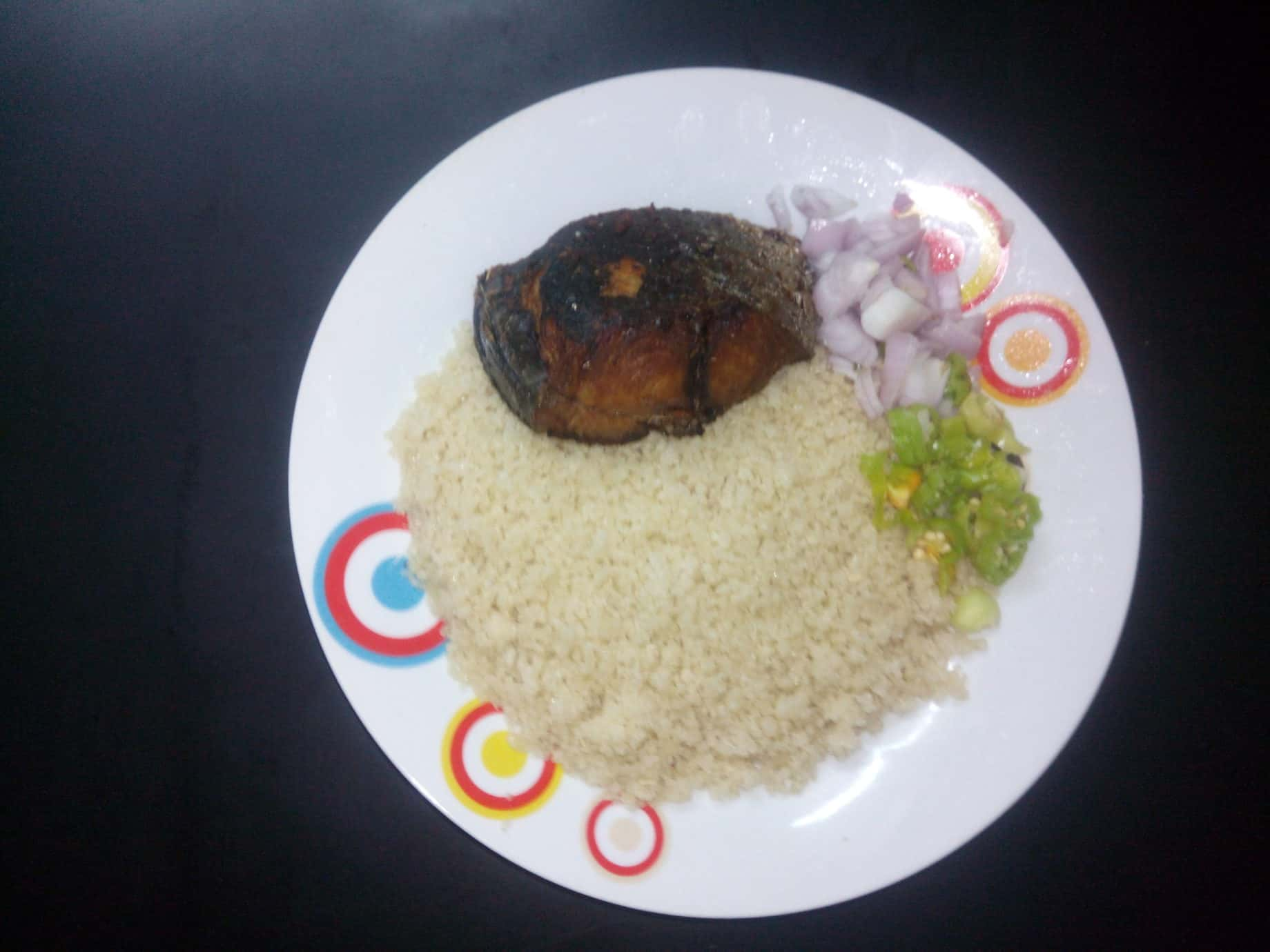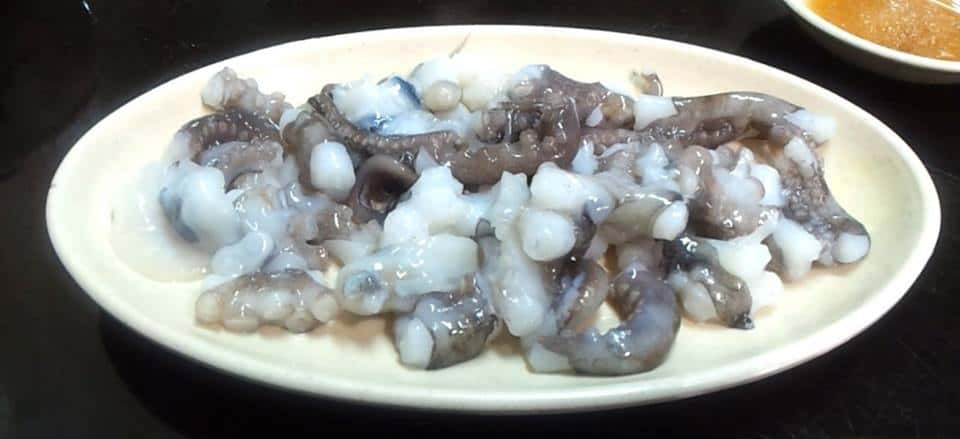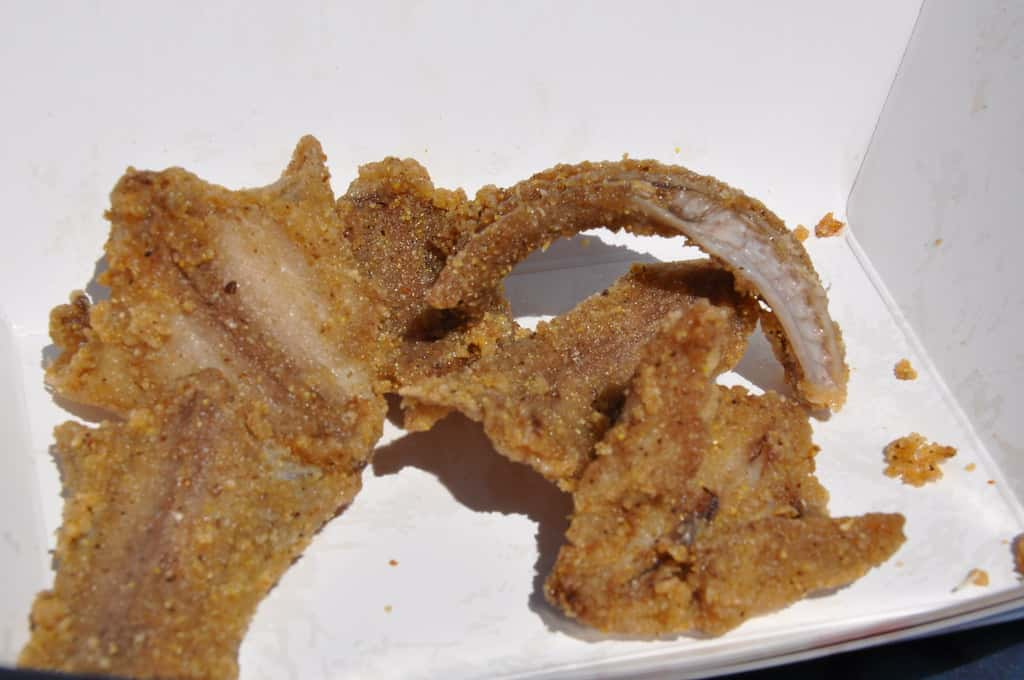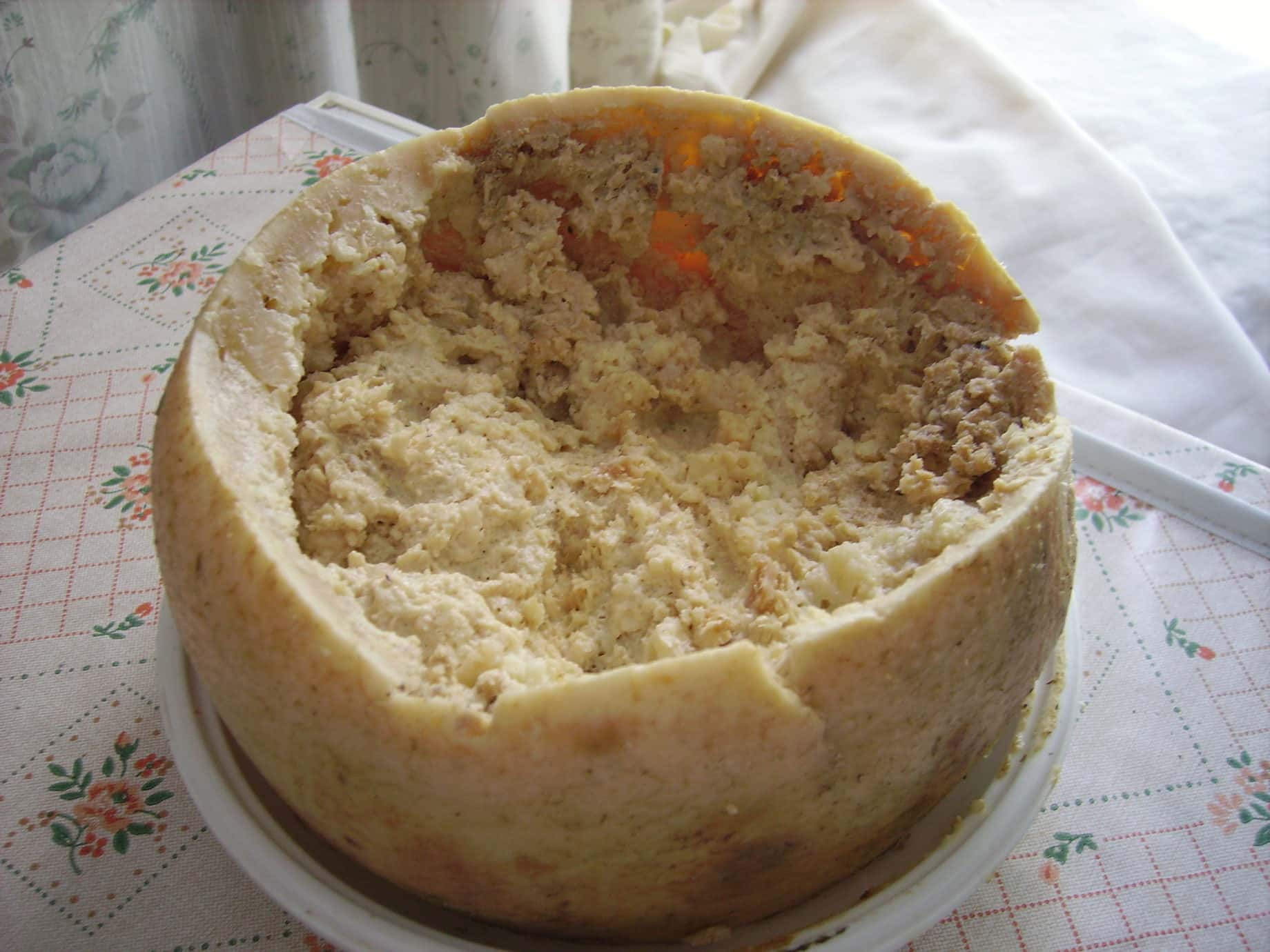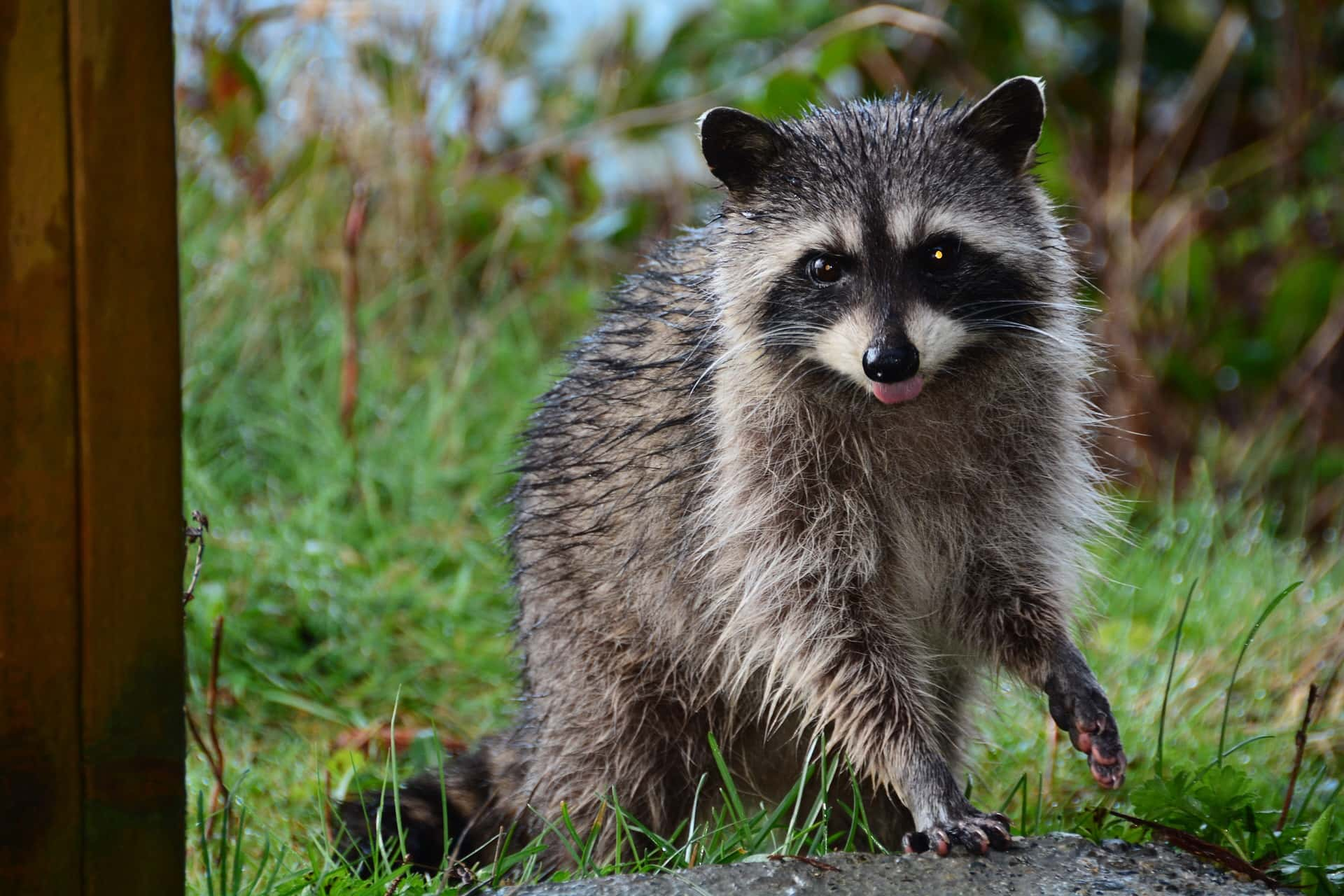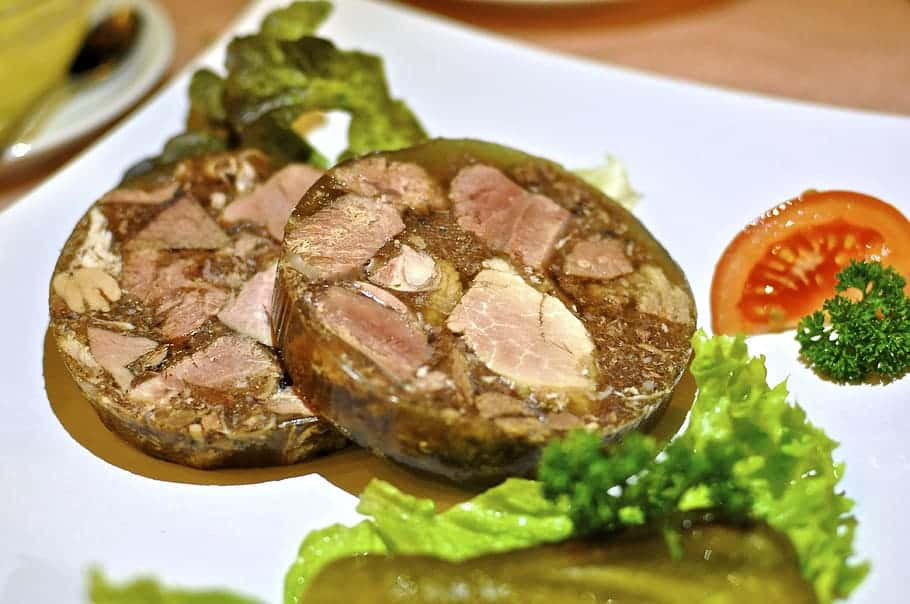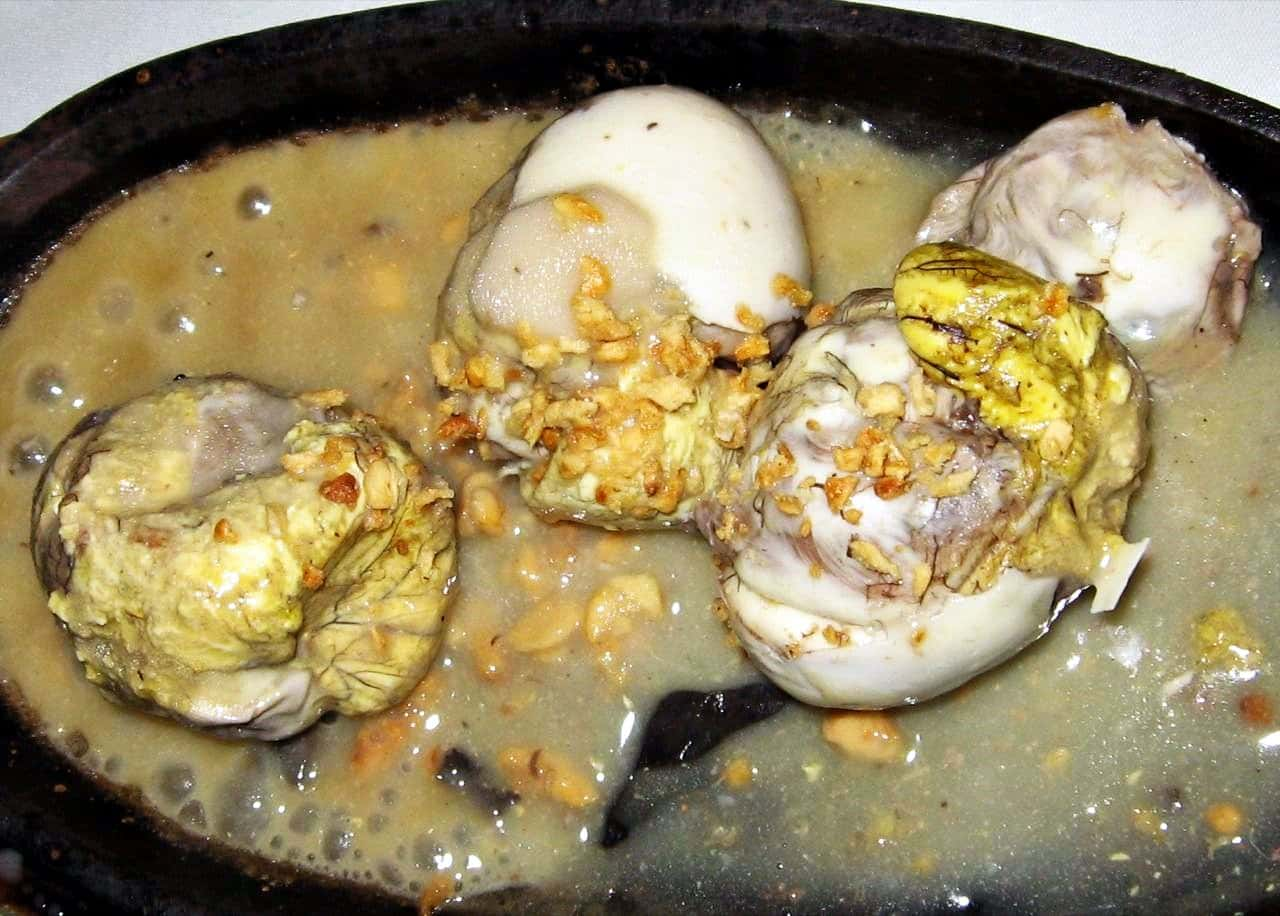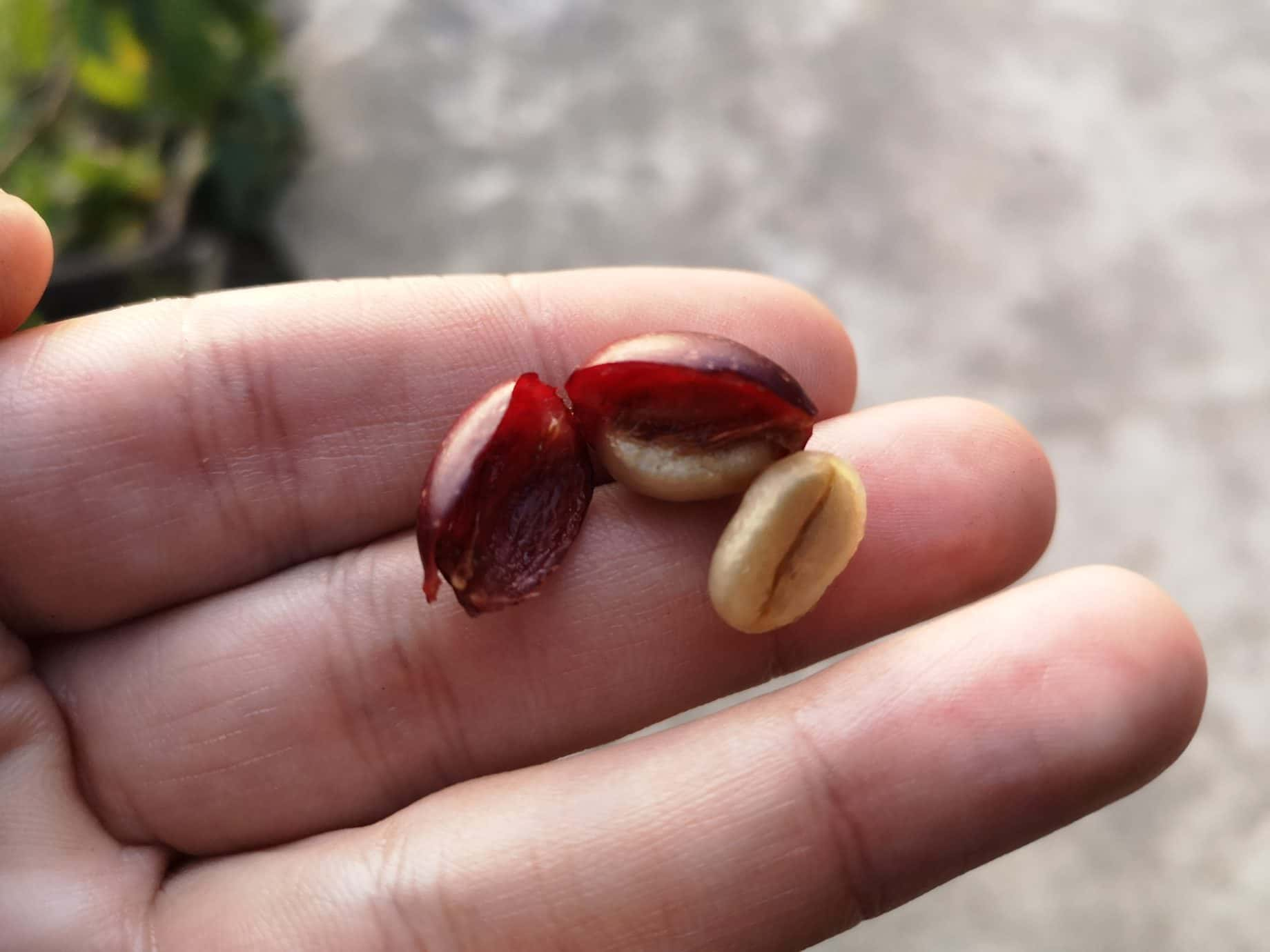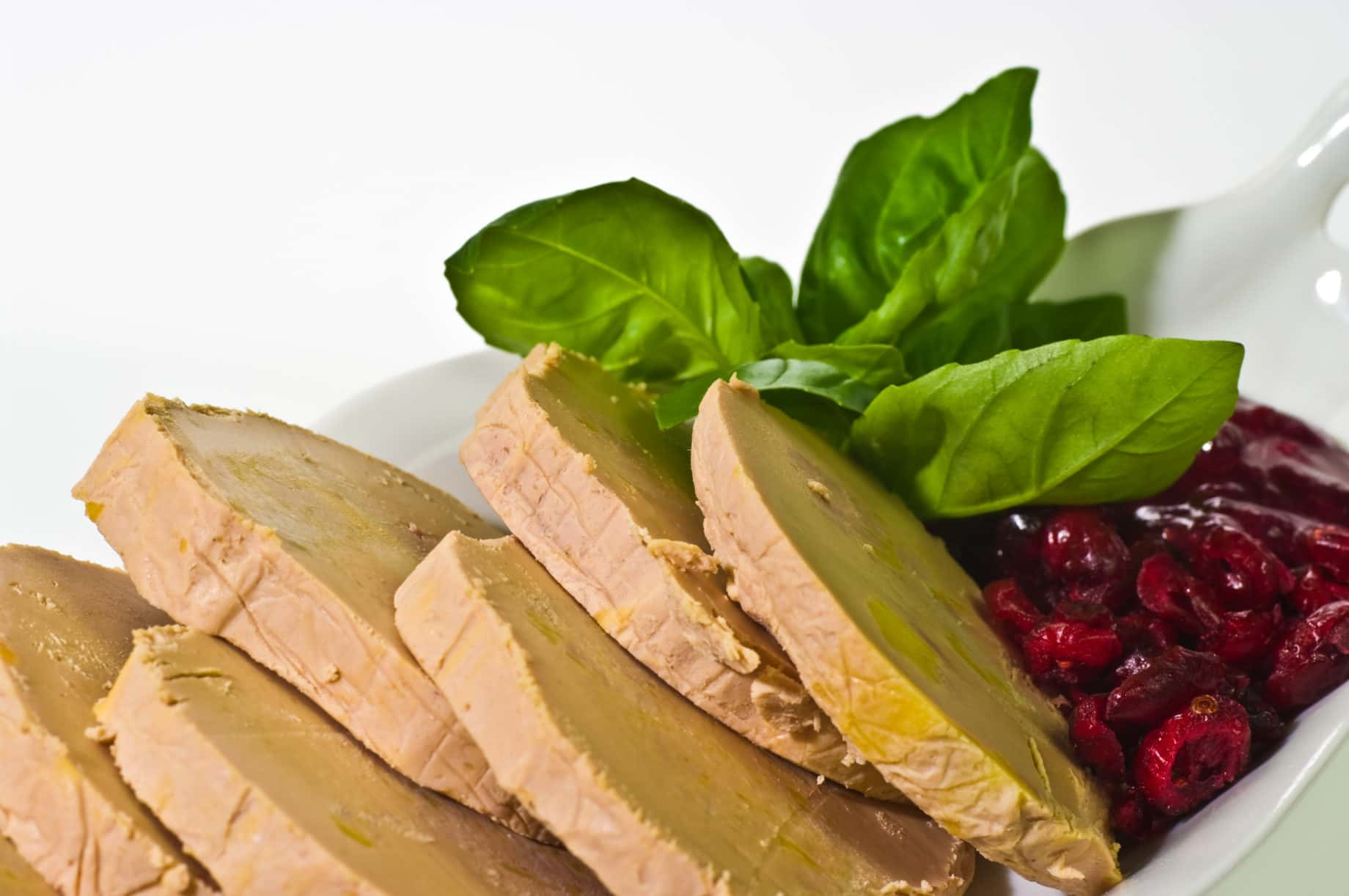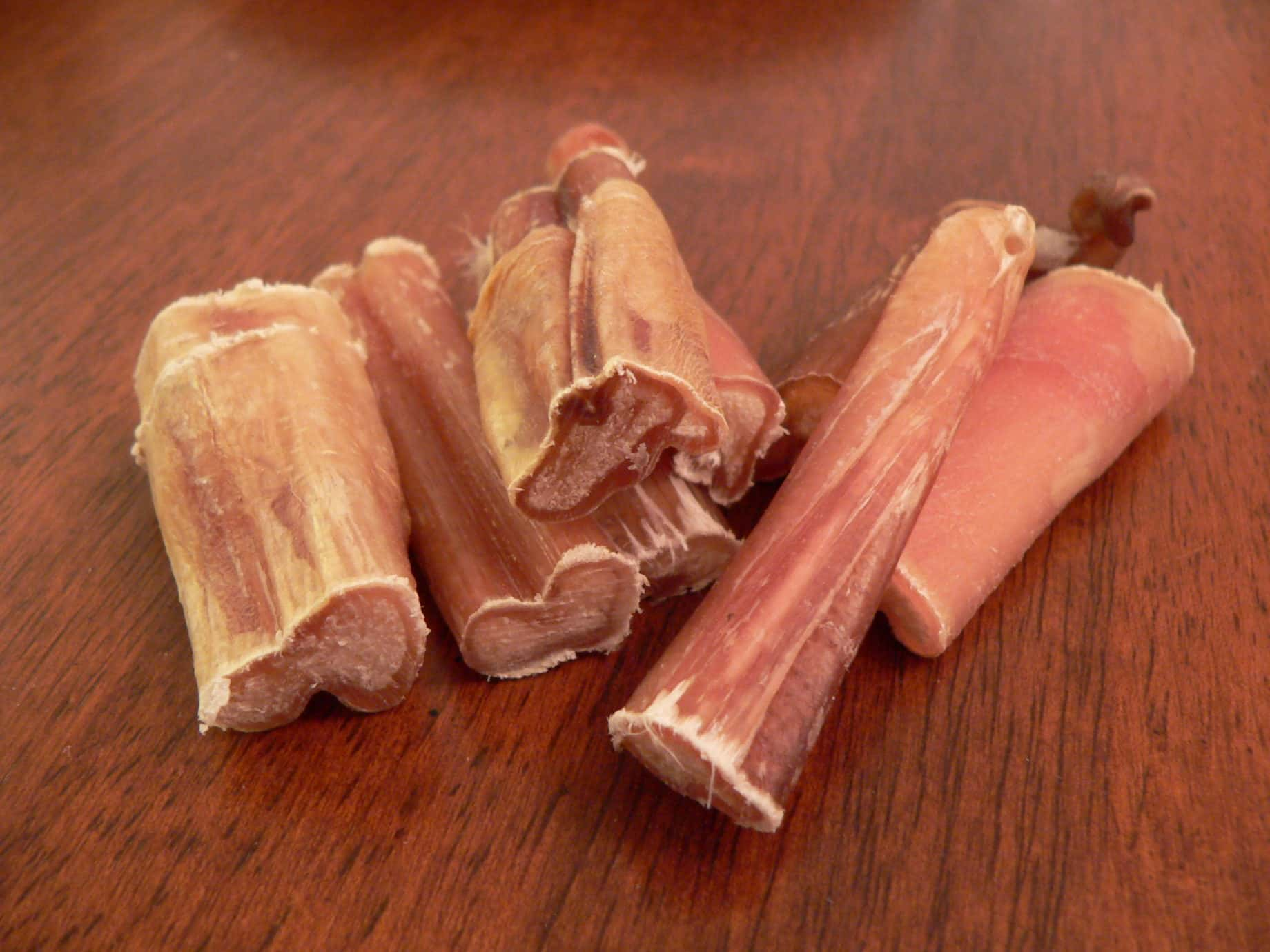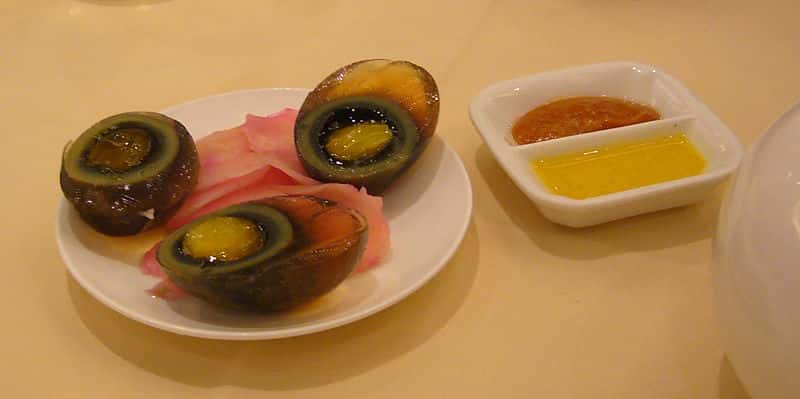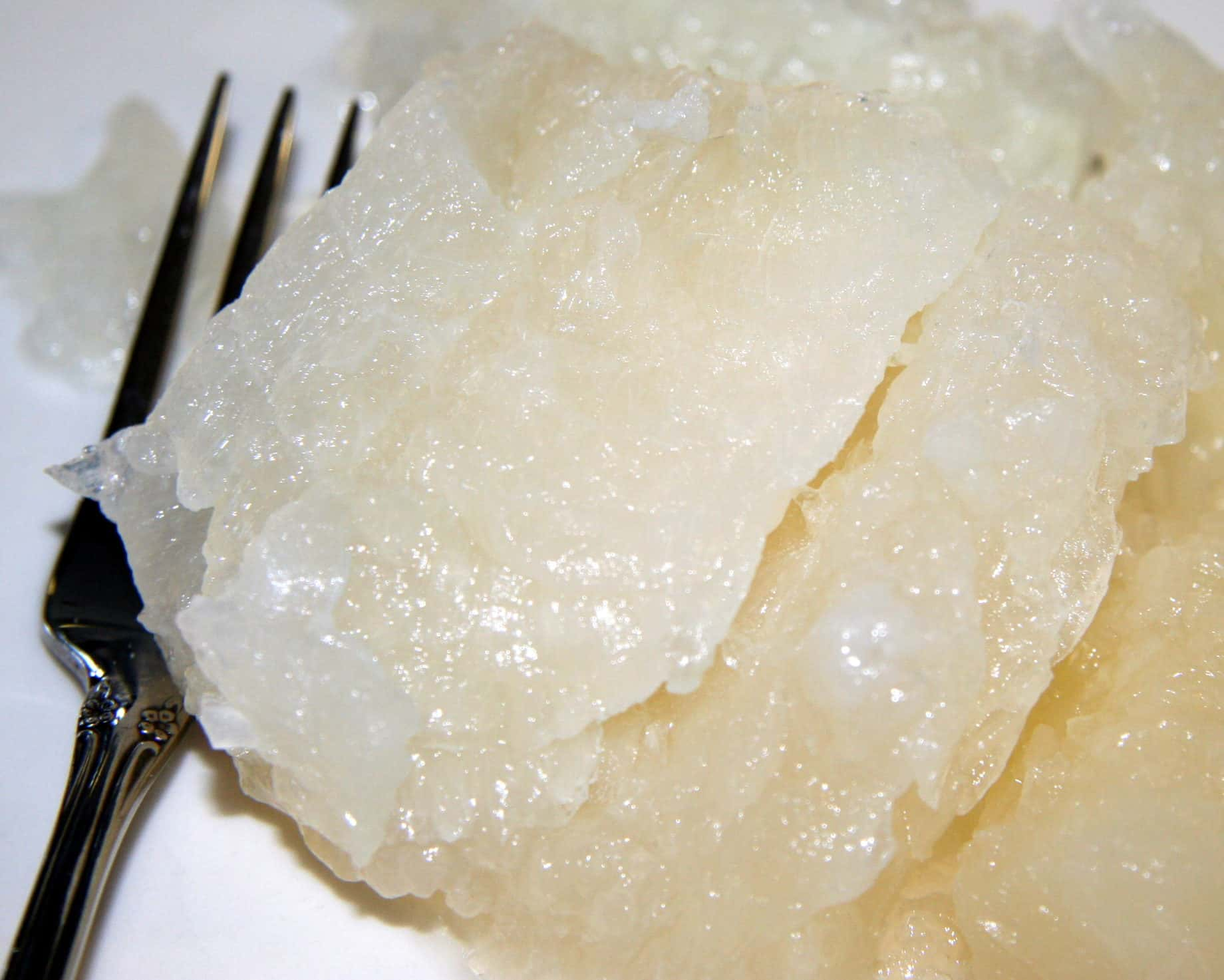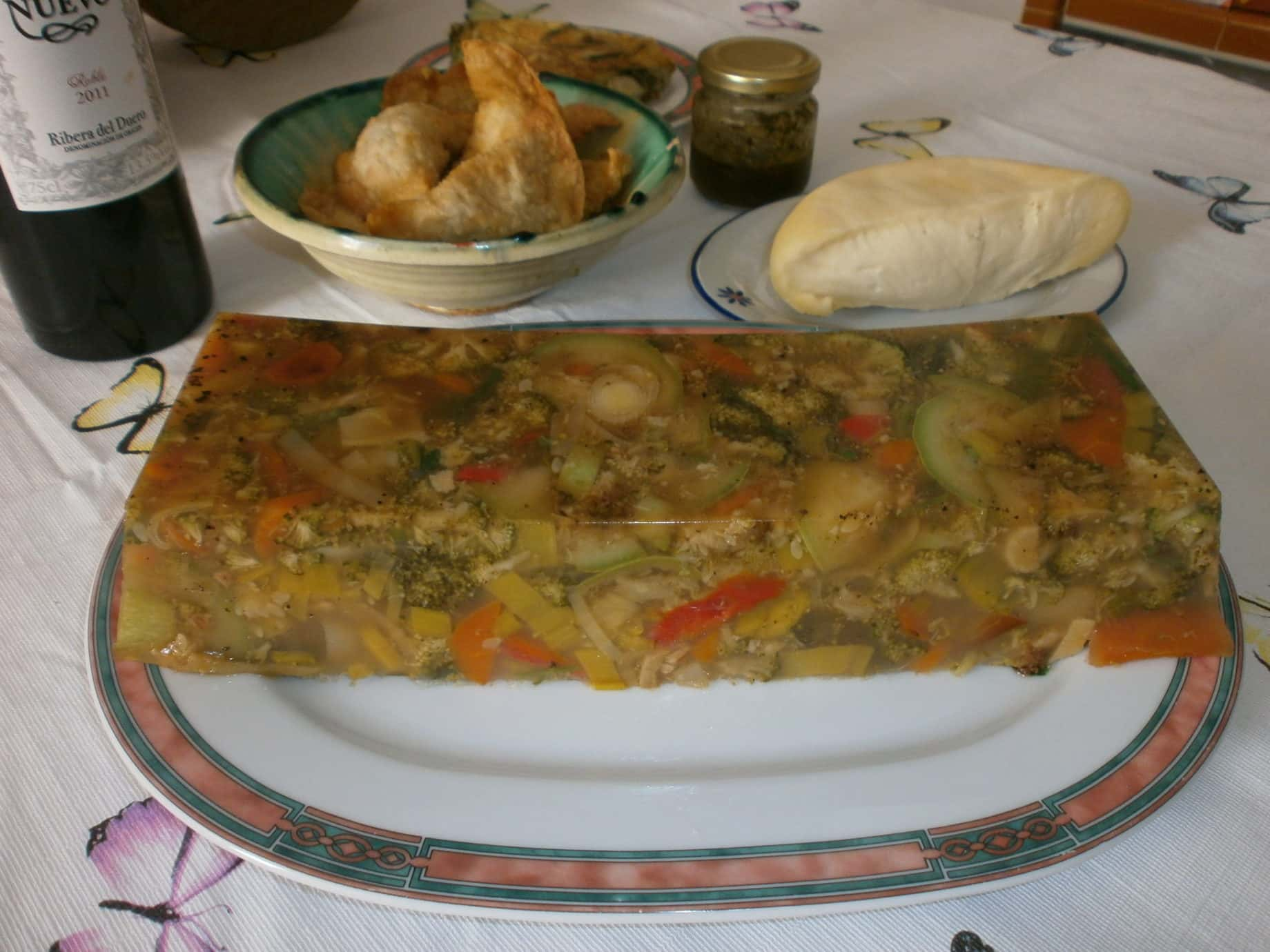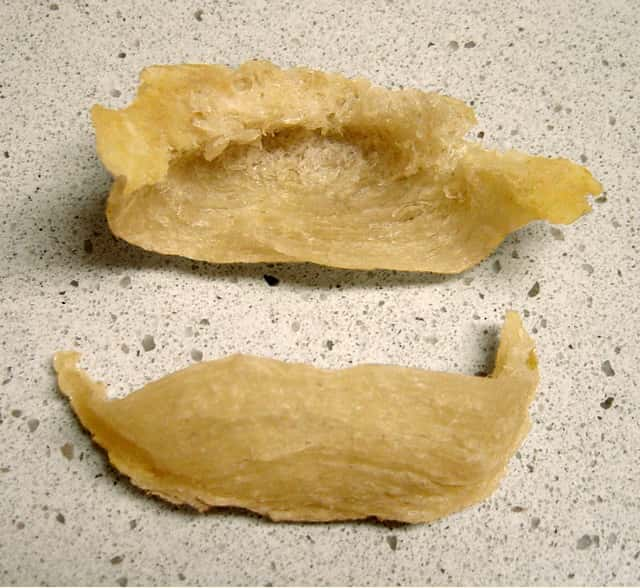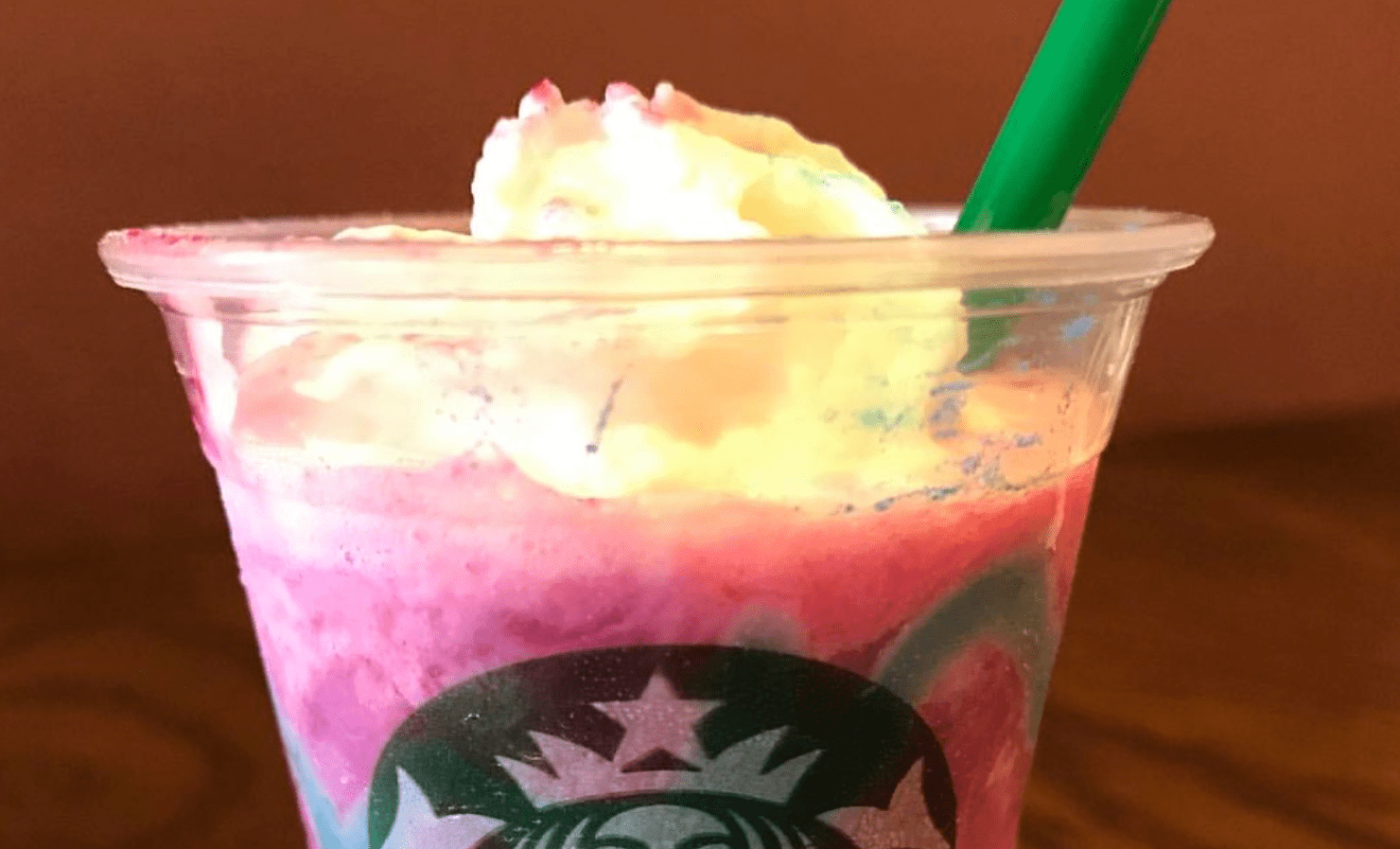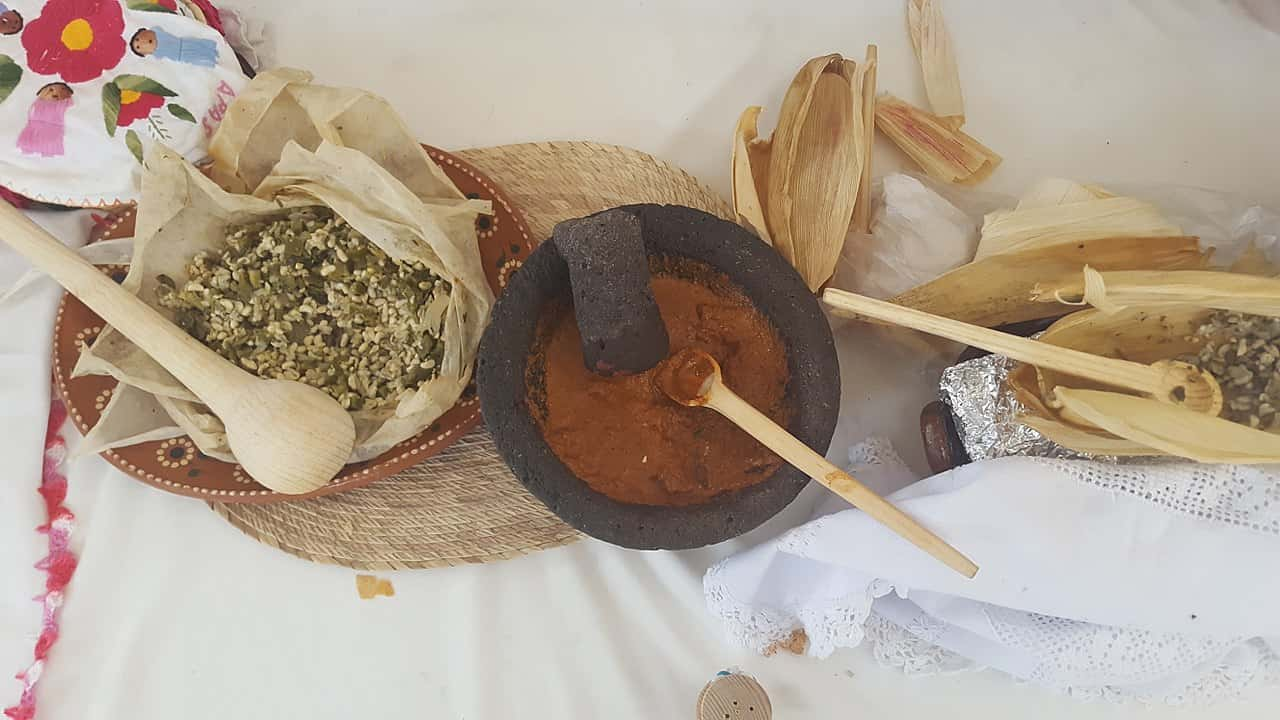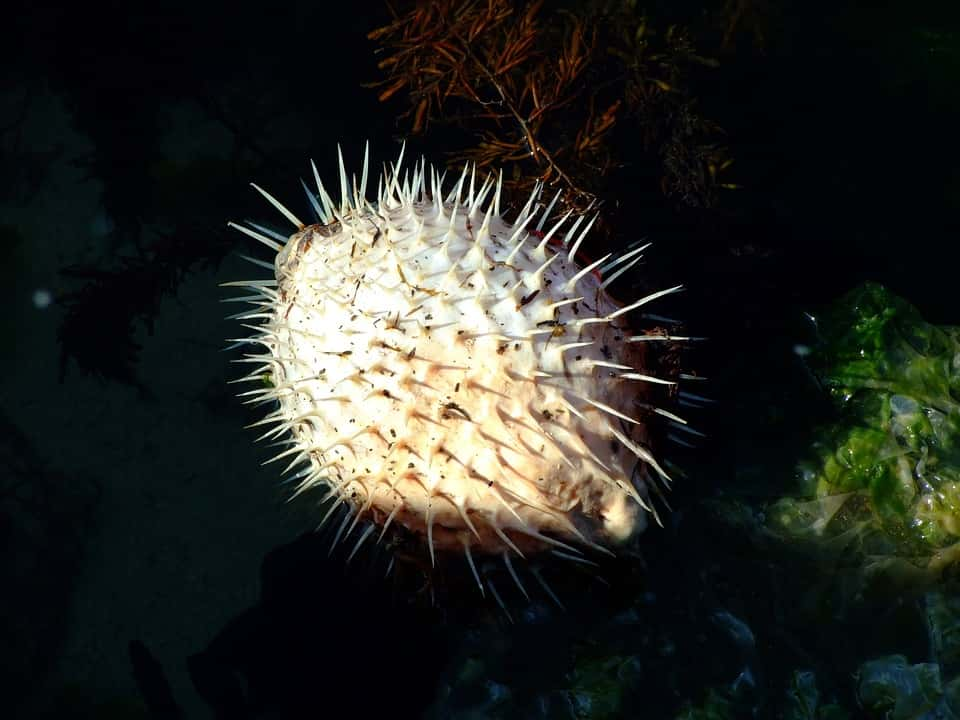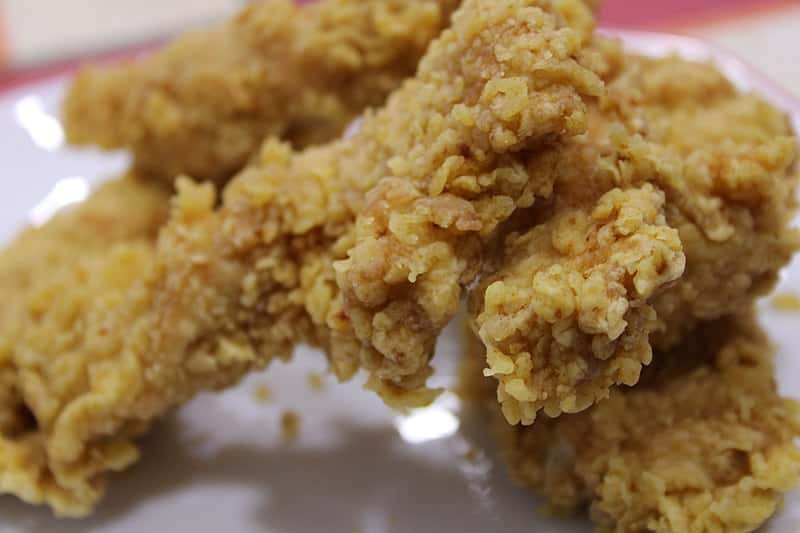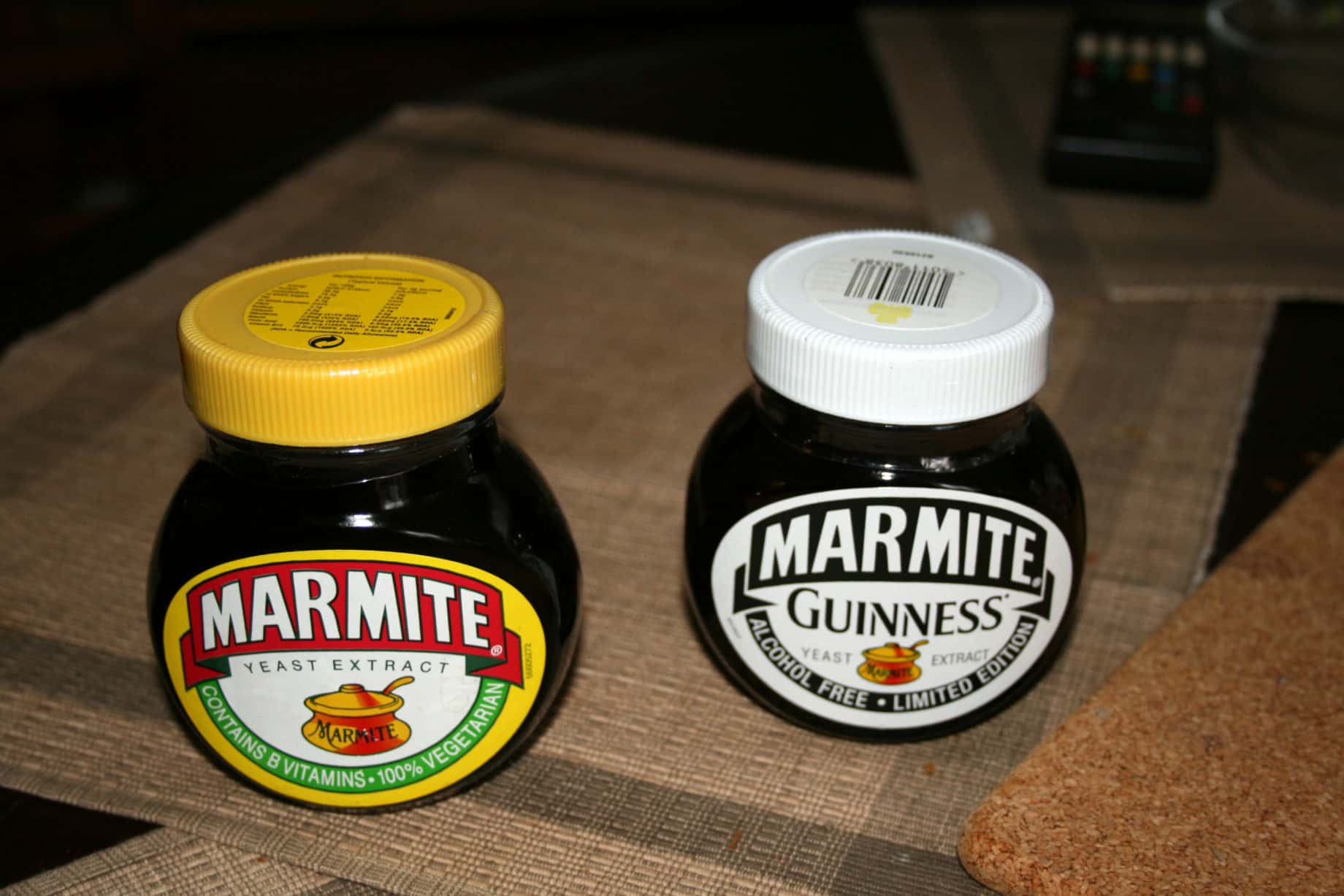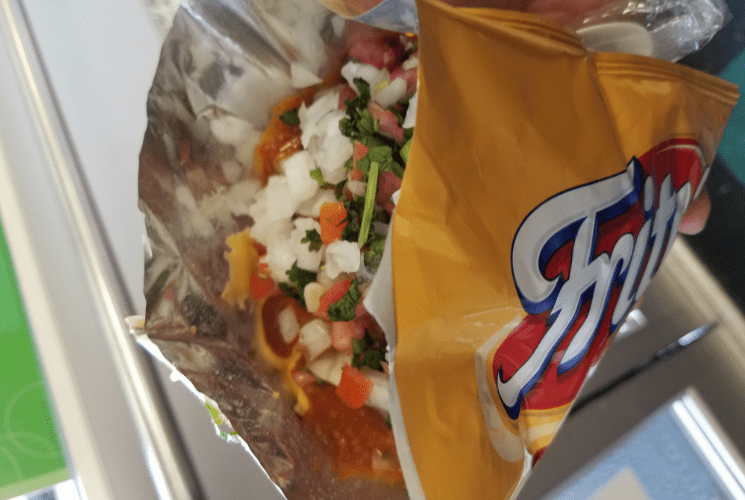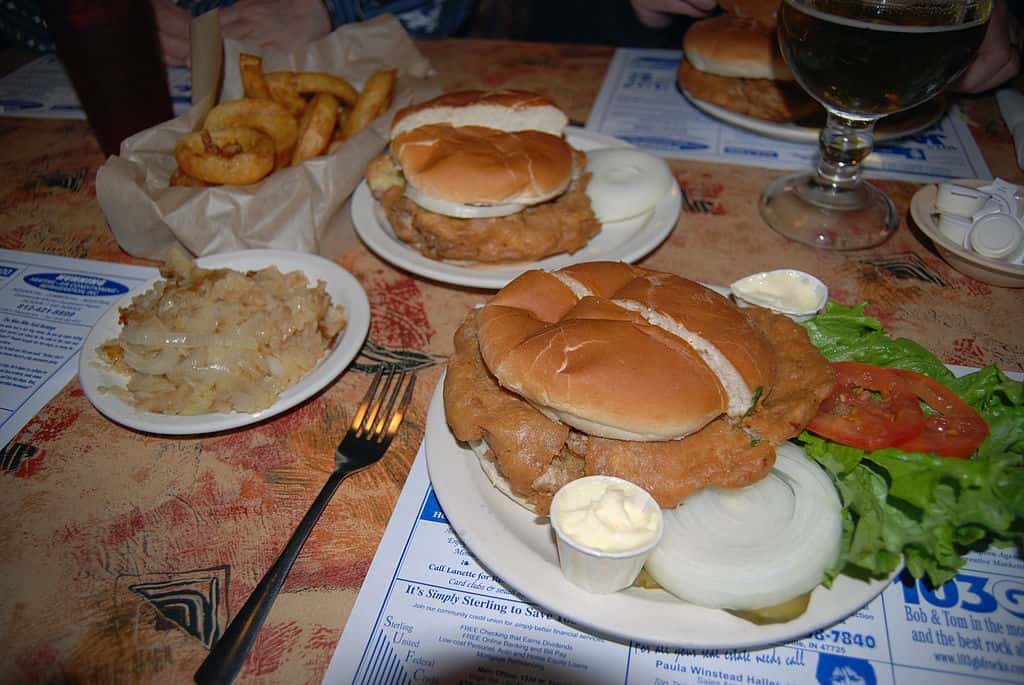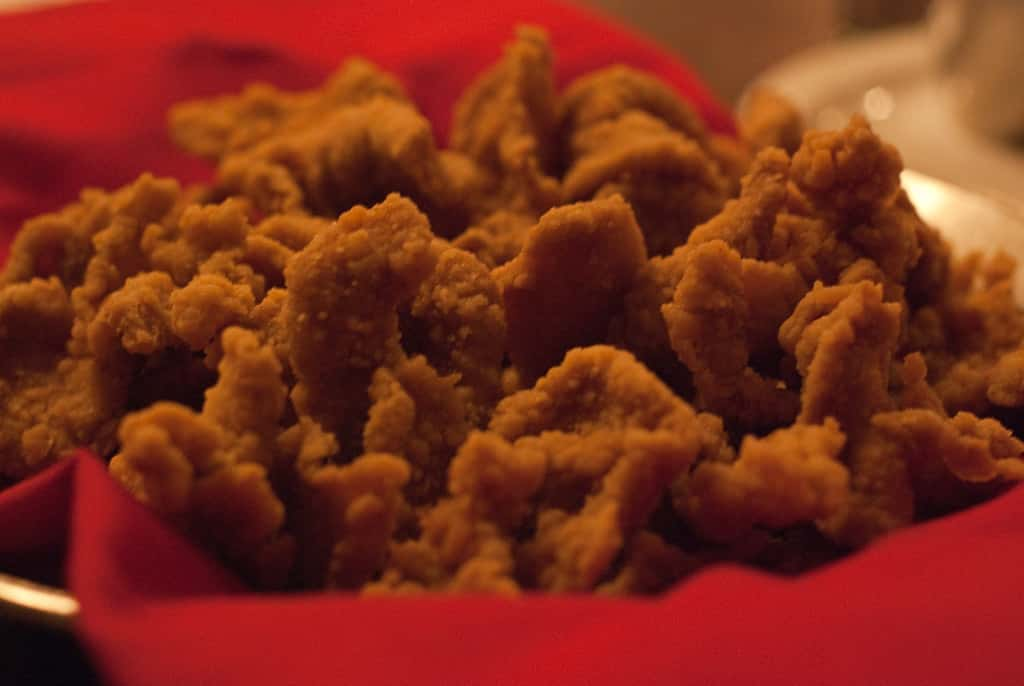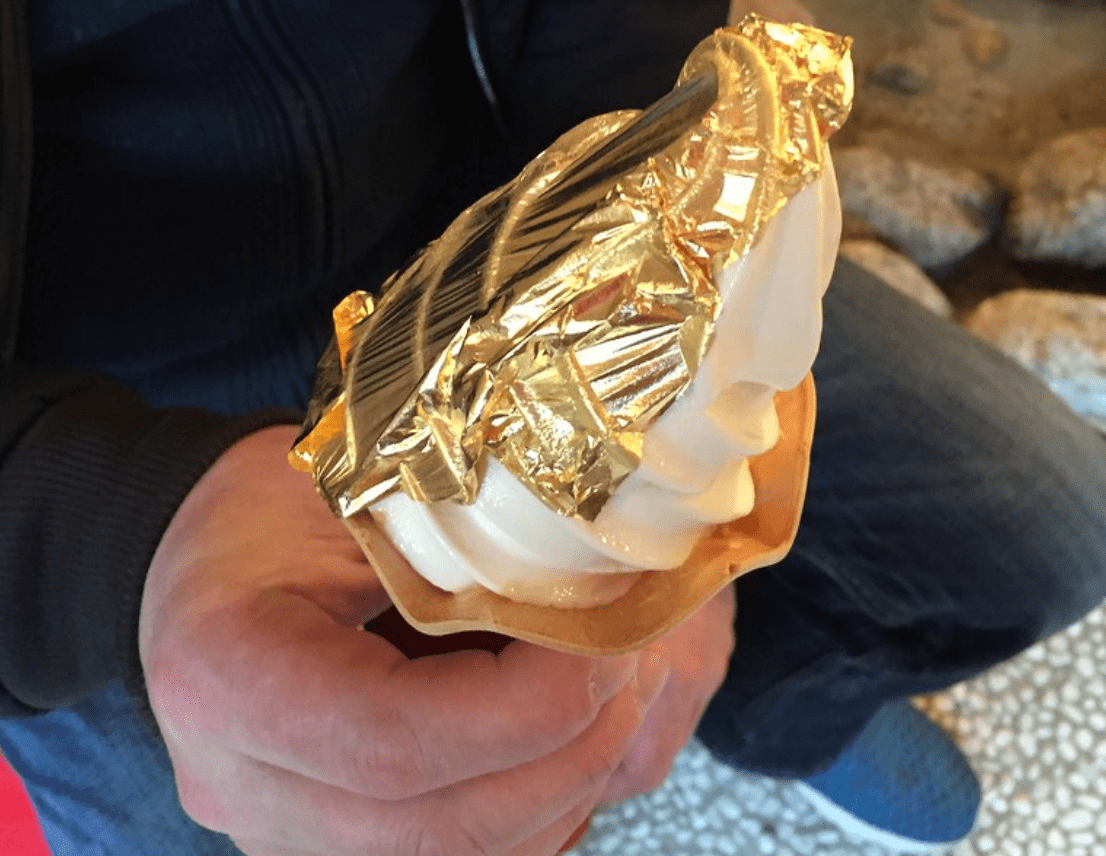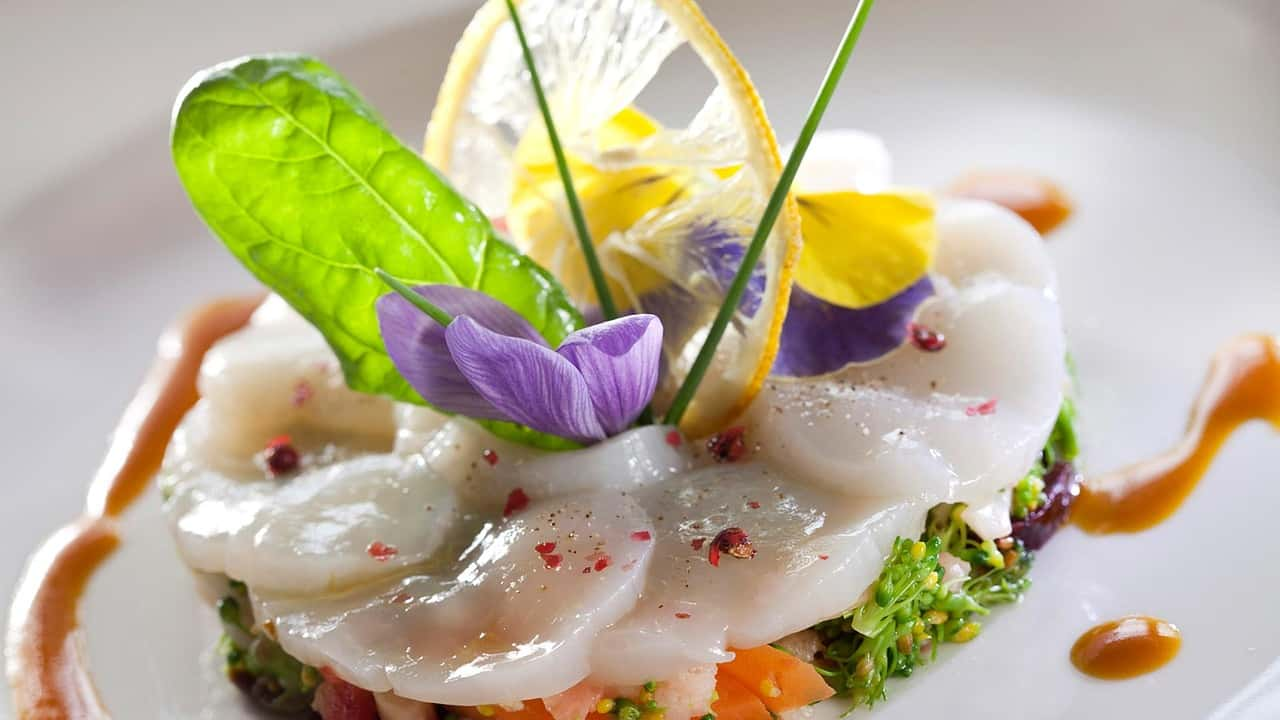Everyone loves food, but some people take it over the edge. If you're a die-hard foodie looking to travel the world and sample the weirdest meals and confections that the world has to offer, maybe pump the brakes for a minute and do some research beforehand to see if you really want to eat what some folks will serve up for you. But, for the most adventurous eaters, this list of 42 facts about some of the world's weirdest dishes might just get your mouth watering. For the rest of us, well...
The World's Weirdest Foods Facts
42. What Are You Looking at?
It’s always an unusual experience to eat something while it’s looking at you. Stargazy Pie, from the Cornish village of Mousehole, in England, is a festive dish served on Tom Bawcock’s Eve (December 23) to celebrate the story of Bawcock, a 16th century fisherman who headed out into a storm and brought back a catch large enough to end a famine and feed the village’s starving residents. The pie is aptly named: the egg, potato, and fish pie is served garnished with fish heads baked into the crust, gazing skyward. It’s a nice decorative touch and allows the oils released from the fish heads during cooking to flow back into the pie. Yum!
41. A Poisonous Delicacy
Finding food in northern climes can be difficult, and in Iceland, they often have to be creative, as vegetables are extremely hard to grow in the cold and rocky environment. To make matters worse, the meat of the Greenland shark, which lives in the surrounding waters, is poisonous when eaten fresh. To make the meat edible, the gutted and beheaded sharks are buried in shallow graves and compressed with stones so the poisonous internal fluids that allow it to live in such cold waters can be drained out, making the meat safe to eat. After two to three months, it’s dug up and cut into strips, then hung to dry for several more months. The product is hákarl, cubes of this fermented shark meat that are served up or vacuum-packed for year-round consumption by Icelanders. The dish has an intense ammonia-rich odor and a strong fishy flavor. It was described by Anthony Bourdain as “the single worst, most disgusting and terrible tasting thing” he’d tried, and even Bizarre Foods host Andrew Zimmern described it as “not for beginners.”
40. The Great Outdoors
Sweden’s answer to hákarl is surstromming, Baltic sea herring fermented with just enough salt to prevent it from rotting. The fish are tinned in brine in Northern Sweden, where it’s cold enough for ideal fermentation conditions. Fermentation continues in the cans, so they often bulge slightly, and release a pungent gas when opened. For this reason, surstromming is traditionally eaten outdoors.
39. Keep Your Eye on the Ball
Tuna fish are very popular in Japan, and quite expensive, so it seems a shame to let any part of the sought-after fish go to waste. Tuna eyeballs can be bought for less than a dollar at supermarkets in Japan, and are very easy to cook: simply boil or steam and season with soy sauce or garlic. They reportedly taste just like squid, at a fraction of the price.
38. Just Keep Stuffing
Turducken has enjoyed a surprising popularity in recent years, no doubt due to its novelty and sheer ridiculousness. The dish traditionally consists of a hollowed-out and deboned chicken stuffed inside a duck, stuffed inside a turkey, with various stuffings and vegetables packed throughout, so that diners are served a slice containing the meat of all three birds. However, in 1807, Grimod de la Reynière wrote a recipe for the turducken taken to its logical extreme: rôti sans pareil, the “roast without equal.” 17 birds—beginning with a tiny warbler stuffed inside a bunting, in a thrush, in a lapwing, in a quail, in a partridge, and so on—are layered and finally stuffed inside a bustard, which is similar to a large turkey. But while the rôti sans pareil might seem like a culinary test piece, there’s no record of anyone ever actually making the dish.
37. 'Roo Food
In Australia, kangaroo meat is often sourced from wild animals as a way of keeping the kangaroo populations under control, but it’s also a popular lean alternative to beef or pork. The kangaroo graces the Australian coat of arms, making them one of the few nations that eats their national mascot.
36. Poetic Dining
The iconic Scottish dish haggis consists of sheep’s heart, liver and lungs minced and mixed with onions, oatmeal, suet and seasoned with salt and spices, then cooked inside the animal’s stomach. To the non-Scottish, it may sound a bit unappealing, but to Scotsmen, it's so beloved it’s been made the subject of a poem—Address to a Haggis by Robbie Burns in 1787.
35. Because Why Not?
A dish as delicious as haggis could only be followed by a dessert as decadent as the deep-fried Mars bar. This dish originated in Scottish fish-and-chip shops, which makes sense as the recipe is basically the same as fried fish: simply coat the bars in batter and deep-fry. They’re often served with ice cream, or on a stick. The dessert is not, however, endorsed by Mars Inc., the candy bar’s manufacturer. Their official position: ”deep-frying one of our products would go against our commitment to promoting healthy, active lifestyles." Riiiiiight...
34. Ribbity Tidbit
What food is both a staple of haute French cuisine and back-woods Florida swamp cookin’? Why, it’s delicious frog’s legs! In France, cuisses de grenouille are often roasted, simmered, and finely seasoned. In Florida, the frogs are caught in nearby swamps and deep-fried in batter. Because frogs are cold-blooded, they do not resolve rigor mortis as quickly as warm-blooded animals. This can cause their muscles to twitch, even while on a diner’s plate.

Sign up to our newsletter.
History’s most fascinating stories and darkest secrets, delivered to your inbox daily. Making distraction rewarding since 2017.
33. Beak, Bones and All
The tiny and delicate ortolan bunting, a songbird now endangered in France, is a decadent and storied dish in traditional French cuisine. The birds, weighing just an ounce, were caught and either blinded or kept in darkness, causing them to gorge on millet and double or even quadruple in size. When ready to be eaten, they are drowned alive in a vat of Armagnac brandy, which both kills and marinates them. They are roasted for eight minutes, then plucked, and popped whole into the diner’s mouth with just the head and beak sticking out. The diner crunches down, savoring the juices of the innards, along with the lungs full of brandy and the still-present, but softened beak and bones. In a tradition first described by famed French gourmand Jean Anthelme Brillat-Savarin, ortolan is eaten while diners cover their faces with large napkins, both to contain the aroma of the meal and “to shield—from God’s eyes—the shame of such a decadent and disgraceful act."
32. Don't Be a Sucker
The South Korean dish called san-nakji consists of octopus served fresh, and we mean fresh. The octopus is cut up and served raw, often with only a splash of sesame oil. The tentacle pieces are often still twitching or squirming, due to residual nerve activity, and the suckers on the tentacle undersides can attach themselves to the diner’s tongue or throat, making consumer choking a very real possibility.
31. Birthday Snake Anyone?
Another staple of back-country Southern American fare, rattlesnake meat is said to taste much like frogs’ legs. 1981’s Great American Writer’s Cookbook suggested soaking the meat in vinegar with a hint of tobacco, then seasoning with salt and pepper and coating with egg, flour, and breadcrumbs, then deep-frying. Notably, Harry Crews’ gothic novel A Feast of Snakes (1976) features what is probably the greatest depiction of rattlesnake hunting and cooking in American literature, in case you were looking.
30. Maggot Cheese
Literally translating to “rotten/putrid cheese,” the Sardinian cheese called casu marzu could put off lovers of even the moldiest cheeses. It's derived from pecorino, a sheep’s milk cheese, then processed again through the digestion of fly larvae. Yes, that’s right, the larvae are introduced into the cheese, they eat it, and humans eat the byproduct (along with the larvae). The larvae are themselves only 8 mm long, but can jump up to 6 inches when disturbed, so diners beware.
29. Friend or Feast?
Thanksgiving turkey is a tradition in America, but it wasn’t always so. In times before large-scale refrigeration and food distribution, folks often ate what they could get around them, which in some areas was raccoon. One generous citizen from Mississippi even sent a raccoon to the White House in 1926, a gift for President Calvin Coolidge and his family, intended to grace the table at their Thanksgiving dinner! Coolidge couldn’t bear to eat the animal, and instead, the raccoon was named Rebecca and kept as a beloved family pet. Rebecca was often seen walking on a leash around the White House grounds, and according to stories, would spend evenings curled up in the President’s lap in front of the fireplace.
28. Does it Go With Peanut Butter?
What dinner party in Northern Canada would be complete without the local delicacy of jellied moose nose? First described in print by Eleanor Ellis in her Northern Cookbook in 1967, this recipe has been enjoyed by Canadian Indigenous peoples for centuries. The dish combines light and dark meat from the moose’s nose and upper jaw area, along with onions, garlic, and spices, that combine into a head-cheese like loaf when the collagen from the nose cools and solidifies.
27. Chicken or Egg? Neither!
It’s not quite a chicken, but not quite an egg. Balut is the result of cooking a fertilized duck egg with a partly developed embryo inside. The egg is boiled (alive), then eaten from the shell with salt, chilis, and vinegar. A traditional Filipino street food, balut is eaten by tapping a hole in the top of the shell, sucking out the liquid, and crunching down on whatever remains, though they’re often added to omelets or served inside pastries.
26. Quite the Filtration Process
The most expensive coffee in the world comes from coffee cherries selected not by discerning humans, but by Asian palm civets. The small cat-like (but non-feline) mammals eat the cherries, then excrete them in their feces, where they are harvested by farmers and processed into coffee. Some say the selection process, as well as the digestion by the civets, gives the beans a superior flavor. A kilogram of civet coffee, also known as kopi luwak, can fetch up to $700 US!
25. Liver Me Timbers
Foie gras is a luxury food made from duck or goose liver. The eating of liver is generally uncontroversial on its own, but many people today find the production methods of foie gras to be barbaric and unacceptable, as the practice often involves force-feeding birds and restricting their movement. The livers are eaten whole or processed into pâté, and can be found in Europe, China, and North America.
24. All Penis, All the Time
Animal penis is often eaten in parts of the world when wasting a perfectly edible piece of an animal would be foolish, but only at Guo Li Zhuang Restaurant in Beijing can you enjoy a menu that is all penis. Dishes prepared from the male genitals of sheep, horse, donkey, ox, dog, deer, and snake are served in the restaurant’s four locations, and properties in the genitals are said to increase male sexual potency and improve women’s skin, because why wouldn't they?
23. Ambrosia Salad
The word “salad” might be a stretch. Ambrosia is a side dish or dessert from the American South made from canned fruit—often pineapple, maraschino cherries, mandarin oranges—along with marshmallows, peeled grapes, and bananas. The dessert is mixed with a large quantity of mayonnaise, sour cream, or whipped-non-dairy topping (i.e. sweetened hydrogenated vegetable oil). The word “Ambrosia” might be a stretch too, as ambrosia refers to the food of the Greek gods.
22. Really, Really Well Aged
It’s technically a misnomer, but the details hardly matter—a century egg (also known as “huhttps://commons.wikimedia.org/wiki/File:Coconut_ambrosia_salad.jpgndred year egg,” “thousand year egg” or the simple but apt “black egg”) is usually only a few months old. This traditional Chinese dish is made with eggs preserved in clay, ash, and quicklime for several months, until the yolk turns a dark green or black and the white turns to a dark brown translucent jelly. The eggs smell and taste strongly of salt and ammonia, but are edible and loved by some. In Thailand and Laos, this dish is known as “horse urine egg” because of the smell. Catchy.
21. Lye Down
The Scandinavian dish lutefisk requires a very careful process: first, whitefish (often cod) are soaked in water for several days, then treated with lye. This causes the protein to transform into a jelly-like substance but also makes the fish so corrosive it must be soaked in water again for several days to make it edible again. It’s then cooked for 25 to 40 minutes, and often served at holiday means in Scandinavia. Lutefisk is also popular in Minnesota, where many Scandinavians immigrated in the early 19th and 20th centuries.
20. Made in the USA
The Heart Attack Grill, a tourist spot in Las Vegas, has cooked what must be one of the world's extreme meals: Known as the Octuple Bypass Burger, it comes with eight patties (that's four pounds of beef), “the works” (onion, tomato, lettuce, and cheese), chilis, and is topped off by 40 slices of bacon! The burger holds the Guinness World Record for the highest number of calories in a single meal—almost 20,000 (which tallies out to one person's recommended intake for nine days). Wine served in an IV bag and “flatliner fries” are optional, but diner beware: if you don’t finish your meal, expect a spanking from your waitress. Seriously, they do that, it's company policy. Only in America!
19. A Tuna Jell-O Treat
North Americans today might associate gelatin with dessert—after all, Jell-O is nowadays only sold in sweet flavors like lime or blue raspberry. But Jell-O has its foundations in aspic, a dish in which savory foods are set in gelatine flavored with consommé or broth. You needn’t look any further than old cookbooks from the '50s, '60s or '70s to find examples of recipes combining Jell-O flavored with tuna or tomato soup, containing chicken, eggs, fish, or cheese that would make modern stomachs churn!
18. Bird Spit Soup
The swiftlet is a type of bird that, instead of building its nest from twigs, creates delicately-woven nests from long, gummy strands of its own saliva, which hardens when exposed to air. The birds build their nests high on the walls of enormous caves, which makes harvesting difficult. The nests are the crucial ingredient in birds’ nest soup, a pricey delicacy in China thought to promote good health. The nests can fetch up to $2000 USD per kilogram!
17. Ham in a Can
Hormel first introduced its tinned meat product, Spam, in 1937, and in 2007, the 7 billionth tin of Spam was sold. According to Hormel, only a select few executives know the “true” origin of the name “Spam,” though it's commonly thought to be a portmanteau of either “spiced ham,” “shoulders of pork and ham,” “specially processed army meat,” or even “spare meat.” Spam solved the problem of delivering fresh meat to American troops during World War II and still remains very popular in tropical places that had a US military presence such as Hawaii, Guam, Okinawa and the Philippines.
16. Color Crazed
Despite the current craze for “clean eating,” people sure go nuts of any sort of “unicorn” or “rainbow” food. Unicorn bagels, bread, donuts, even sushi and grilled cheese sandwiches blow up on Instagram if they are brightly colored with excessive amounts of rainbow food coloring. In April 2017, Starbucks had a hit drink with the “Unicorn Frappuccino,” which not only changed color from pink to blue but also changed flavor, starting sweet but turning sour. What was in it? According to Starbucks, the magic ingredient was “fairy powder.” Sorry Starbucks, but that's not going to make me trust the goop you're offering me.
15. Larvae Tacos
Escamoles are the larvae of a venomous ant species that lay their eggs deep down in the roots of agave or maguey plants in Mexico. The larvae are said to have a consistency akin to cottage cheese and taste somewhat nutty; they’re normally eaten as the filling in a taco or omelet.
14. There's a Map to the Hospital on the Back of the Menu
For some, danger is the most delicious dish, and fugu is certainly dangerous. This blowfish contains tetrodotoxin—a poison more dangerous than cyanide—but it's still a popular dish in Japan. Fugu can only be served by a trained and certified chef, who carefully removes all the toxic parts and slices the blowfish meat into thin sashimi, served raw. Even still, around 6 people die each year in Japan after eating fugu. Do you like your odds?
13. How Even...?
Every year, food providers at the State Fairs in Minnesota and Texas try to outdo each other with the deep-fried, decadent glory of their offerings. In 2006, the Texas State fair awarded the prize of “Most Creative” to Neil Dorrington for creating “Deep-Fried Coca-Cola,” essentially a Coke-flavoured batter, deep-fried to perfection, and slathered with Coca-Cola syrup, whipped cream, and cinnamon, clocking in at 830 calories per serving. Dorrington previously had hits with “Deep-Fried Butter” and “Deep-Fried Beer.”
 Flickr,Willrad von Doomenstein
Flickr,Willrad von Doomenstein
12. Basically Anything Else from the Minnesota State Fair
The Minnesota State Fair is THE place to go for those seeking an extreme food experience in America, especially those unconcerned with fat or calorie content. Do you have a craving for deep-fried gator nuggets? What about breakfast ice cream? Candied maple bacon sliders? All available at the Minnesota State Fair, where even the kale is deep-fried.
11. I Choose "Hate It"
Made from yeast extract, a by-product of brewing beer, Marmite is essentially the slurry from the bottom of the barrel that most breweries just throw away. It’s a sticky brown paste with a concentrated, salty flavor that’s usually spread on toast or eaten with cheese. The paste is an acquired taste, even reflected in Marmite’s slogan, “Love it or hate it!” Vegemite is a very similar spread sold in Australia. Its popularity is such that it has actually become a part of Australian culture.
10. Canadian Cravings
While it might seem to some like a perfectly reasonable dish, in the last decade, America has formed a fascination with poutine, the Canadian dish made of french fries, gravy, and cheese curds. Chicago even has its own festival, Poutine Fest, in tribute to the dish, where restaurants create variations and vie for the title of “Poutine King.” Poutine purists stick to the three-ingredient original, but poutine-only restaurants have popped up serving pizza, pulled pork, and vegan variants, while the high-class Toronto restaurant Bymark serves a $24 poutine featuring lobster meat and béchamel sauce.
9. Presentation is Key
America’s version of poutine—aka, a disgusting-looking dish that contains a bunch of delicious things—is Frito pie. Crunchy Frito corn chips are doused in beef chili, topped with sour cream, cheese, chopped raw onions and jalapeño peppers. The best part of Frito pie is the presentation: the delicious concoction is often prepared and served right in the Fritos bag!
8. The Beat of My Heart
In 2011, Celebrity chef Gordon Ramsay drew the ire of animal rights activists when he joined in on a culinary tradition in Vietnam. Ramsay, live on television, ate the still-beating heart of a cobra right out of a shot glass! The heart was followed by a meal featuring other parts of the snake, including a glass of its blood, bile, curried guts and chopped skin. The program was intended to show off traditional local cuisine throughout Asia, but Ramsay quipped about his experience: “I think I’m going to become a vegetarian.”
7. Apocalyptic Appetizers
Are you one of the people who want to be prepared for the worst—who believe that the Earth might suffer from a magnetic pole reversal, a solar flare, or a religious event that sees technology fail and society flounder? Well, you’re in luck, because formerly-disgraced preacher Jim Bakker, along with his new wife Lori, have a thriving business selling freeze-dried packaged food in case of an apocalyptic event. In addition to normal preservatives, these foodstuffs are flushed with nitrogen or contain oxygen absorbers to keep the food shelf-stable until 2035, if you're to believe the marketing. NPR put the freeze-dried food to a taste test and based on the pictures, it certainly looks like it might last until 2035, if only because it would take the world ending to make this food seem at all appetizing.
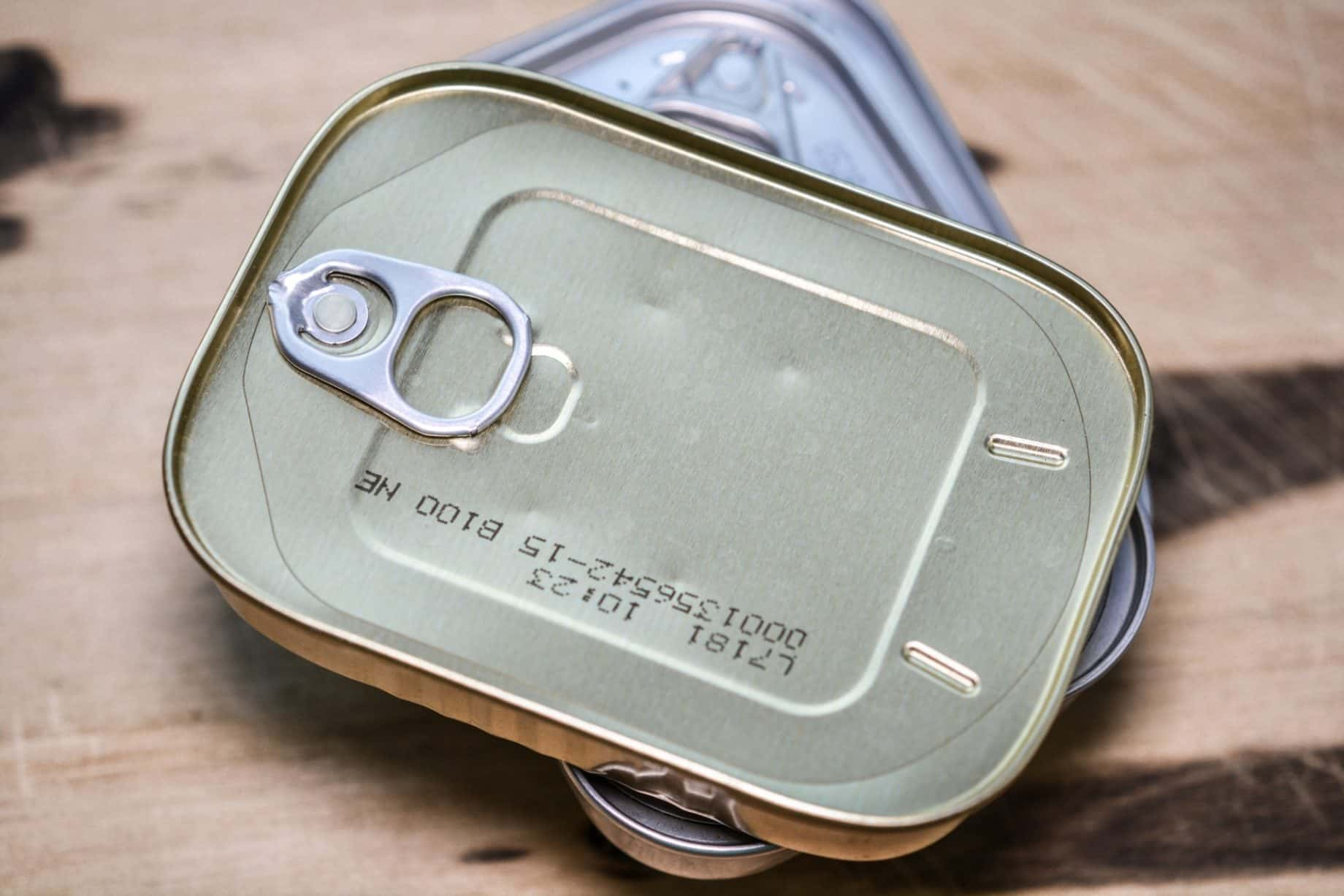 Public Domain Pictures
Public Domain Pictures
6. Zombie-wich
The rise of meat processing plants in St. Louis, Missouri in the late 1880s meant a rise in animal byproducts, and fried brain sandwiches proliferated. Thinly-sliced slabs of calf’s brains were deep-fried and served on buns or sliced bread. While tastes have changed and demand has dwindled, they’re still popular in the Ohio Valley, though after the Mad Cow Disease outbreaks in the 1990s, pig's brains are now used. Unfortunately for those who crave the delicacy, since pig brains are smaller than calf brains, more preparation time is needed as each brain takes just as long to clean, yet yields less delicious, brainy sandwich filling.
5. Don't Get Testy With Me
Rocky Mountain Oysters and Prairie Oysters are the same dish, known by two different names, but they aren’t actually oysters, nor do they come from the sea (you maybe could have guessed that as neither the Rocky Mountains nor the Prairies are known for their seafood). No, they are bull testicles deep fried in a batter of flour, pepper, and salt. Bulls are castrated for breeding purposes and for beef production, so the testicles are merely a byproduct, but why let a perfectly good thing go to waste? Found throughout cattle ranching country, curious eaters wanting to try them can head to the Montana Testicle Festival, which happens annually the first weekend of August. Prepared sautéed, fried or stuffed, the testicles are accompanied with herbs, spices, sauces and dips for a real taste of cowboy cuisine.
4. Ready, Set, Stuff Your Face!
Hot dogs are one of the most benign, common foods in North America, though occasionally they are eaten in the most extreme way. Every year, Nathan’s Famous Hot Dogs in New York holds a Fourth of July Hot Dog Eating Competition, though it’s hardly any competition at all—the challenge is real, but the victory always goes to the same man. In 2017, Joey “Jaws” Chestnut won his 10th contest by downing 72 hot dogs and buns in just ten minutes! The dogs are eaten without any condiments, and often the buns are dunked in water before being crammed into the contestants’ gaping maws, making them they’re easier to swallow.
3. Gonna Need a Shot After That Shot
Drinkers in Dawson City, located in Canada’s Yukon Territory, can visit the Sourdough Saloon and become a member of the Sourtoe Cocktail Club should they desire. Just ask for Captain River Rat, purchase a shot of Yukon Jack whiskey, and watch as a dehydrated human toe is dropped into your drink. After pledging the Sourtoe Oath, simply drink the shot (and remember, your lips have to touch the toe!). However, DO NOT SWALLOW THE TOE. Since its inception in 1973, several overzealous patrons have downed the toe, either by accident or on purpose. The bar is on their 10th toe (the toes are often donated in wills by other patrons). There is now a fine of $2,500 for swallowing the precious digit.
2. Stay Gold
Conceived as a way to celebrate the 50th or “golden” anniversary of the NYC restaurant Serendipity 3, the Golden Opulence Sundae made the Guinness Book of World Records in 2007 as the most expensive sundae in the world. The dessert costs $1000 US and its ingredients include cocoa beans from Venezuela, candied fruits from Paris, a special sweetened dessert caviar, Armagnac, plus 23 karat edible gold leaf. The dessert is served in a $300 Baccarat crystal chalice, which the eater gets to keep. Edible gold leaf is inert—meaning it is not harmful to eat, nor does it have any flavor.
1. It's All Science, Baby
Molecular gastronomy is a popular new school of cooking that uses techniques and devices more commonly seen in a chemistry lab than a kitchen. Cooking science explains why and how food substances change while heated or cooled—such as why egg whites turn from clear to white when cooked, why meat browns, how proteins and carbohydrates function—and some chefs take this to the next level. Using syringes, centrifuges, liquid nitrogen and food dehydrators along with substances such as enzymes, lecithin, maltodextrin and sodium alginate, these chefs transform ingredients into foams, gasses, powders, edible papers and caviar-like spheres. The new dishes are created this way combine and infuse flavors in ways never before seen, and chefs like Grant Achatz from the Chicago restaurant Alinea can command up to $500 per meal from diners who want a dining experience not only new to them but new to the world as well.
Sources: 1, 2, 3, 4, 5, 6, 7, 8, 9, 10, 11, 12, 13, 14, 15, 16, 17, 18, 19, 20, 21, 22, 23, 24, 25, 26, 27, 28, 29, 30, 31, 32, 33, 34, 35, 36, 37, 38, 39, 40, 41, 42, 43, 44, 45, 46, 47, 48, 49, 50, refrigeratorfaq.com

